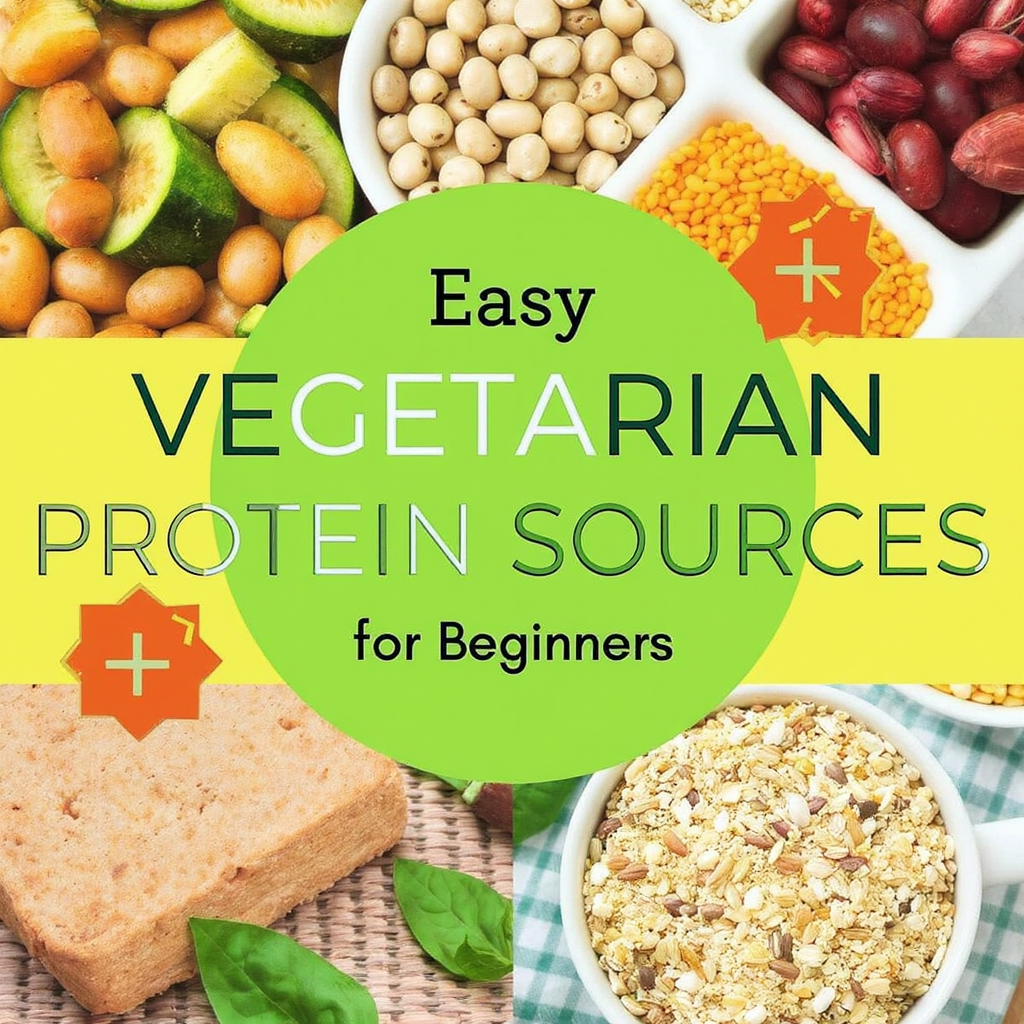Fitness & Exercise
Cardio Exercises for Weight Loss at Home in 2025

Table of Contents
Staying active plays a vital role in achieving weight loss goals, and cardio exercises are among the most effective ways to burn calories and shed fat. The great news is you don’t need a gym or any fancy equipment to benefit from cardio—the convenience and privacy of working out at home make it easier to stay consistent. Below, you’ll discover how to make the most of cardio at home, explore workout options, and enhance your results with smart strategies.
High intensity interval (HIIT) training and low intensity steady-state (LISS) cardio are both outstanding home-based cardiovascular work outs, depending on your fitness level and intentions. Adding bodyweight movements such as burpees, mountain climbers and jumping jacks would also increase your heart rate as you developed strength and endurance. To people who like their routine to be full of fun and action, dance cardio would be a great way to burn calories and actually have a lot of fun. Plyometric skills, e.g. jump rope, or explosive squats provide additional variety and challenge to your workouts, keeping them interesting and giving you the most out of them.

HIIT vs. LISS Comparison
When it comes to cardio, two popular methods stand out—High-Intensity Interval Training (HIIT) and Low-Intensity Steady State (LISS). Each has unique benefits, but which is better for weight loss?
High-Intensity Interval Training (HIIT)
HIIT involves alternating between short bursts of maximum effort and brief recovery periods. For example, 30 seconds of burpees followed by 30 seconds of rest. This technique not only burns a significant number of calories during the workout but also triggers the EPOC effect (Excess Post-Exercise Oxygen Consumption). EPOC causes your body to continue burning calories for hours after exercising due to increased metabolic activity, or metabolic conditioning.
- Best for: Those with a tight schedule who want maximum calorie burn in a short period.
Low-Intensity Steady State (LISS)
LISS, on the other hand, refers to maintaining a steady and manageable pace for an extended duration, such as 30-45 minutes of brisk walking or dancing. While the calorie burn happens primarily during the workout, LISS can target fat oxidation effectively when performed in the optimal heart rate zone (around 50-70% of your max heart rate).
- Best for: Beginners, those with joint issues, or those seeking a less intense approach.
Which Burns More?
While HIIT is generally more efficient for rapid calorie burn and boosting metabolism, LISS can be an excellent option for those just starting. A combination of the two allows for variety and optimal fat-burning results.
No-Equipment Cardio Moves
One of the best things about cardio exercises for weight loss at home is their simplicity—no equipment is required. Here are some effective, no-equipment cardio options, along with modifications for all fitness levels:
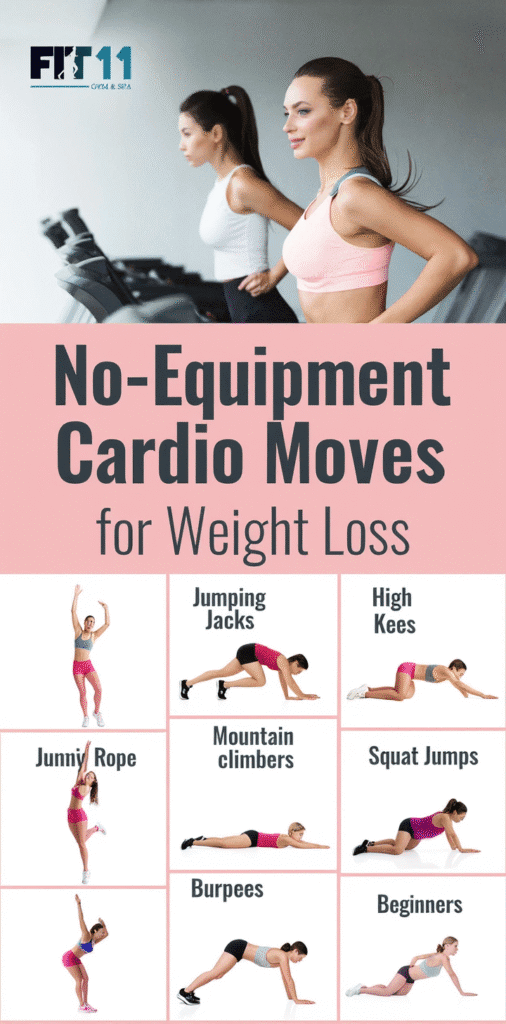
1. Jump Rope (Imaginary)
- Beginner: Perform slow jumps by mimicking the motion of holding a jump rope.
- Advanced: Increase your speed and hop on one foot alternately.
2. Burpees
- Beginner: Skip the push-up phase and simply step back to a plank position instead of jumping.
- Advanced: Add a tuck jump at the end or perform the push-up explosively.
3. Jumping Jacks
- Beginner: Step one leg out to the side at a time instead of jumping.
- Advanced: Perform double-time or add a squat at the bottom of each rep.
4. High Knees
- Beginner: March in place with lifted knees.
- Advanced: Sprint in place as fast as possible, keeping knees high.
These moves cater to a wide range of fitness levels and effectively elevate your heart rate for maximum fat burning.
How to Maximize Calorie Burn
For optimal results, it’s important to focus on strategies that enhance the effectiveness of your cardio workouts:
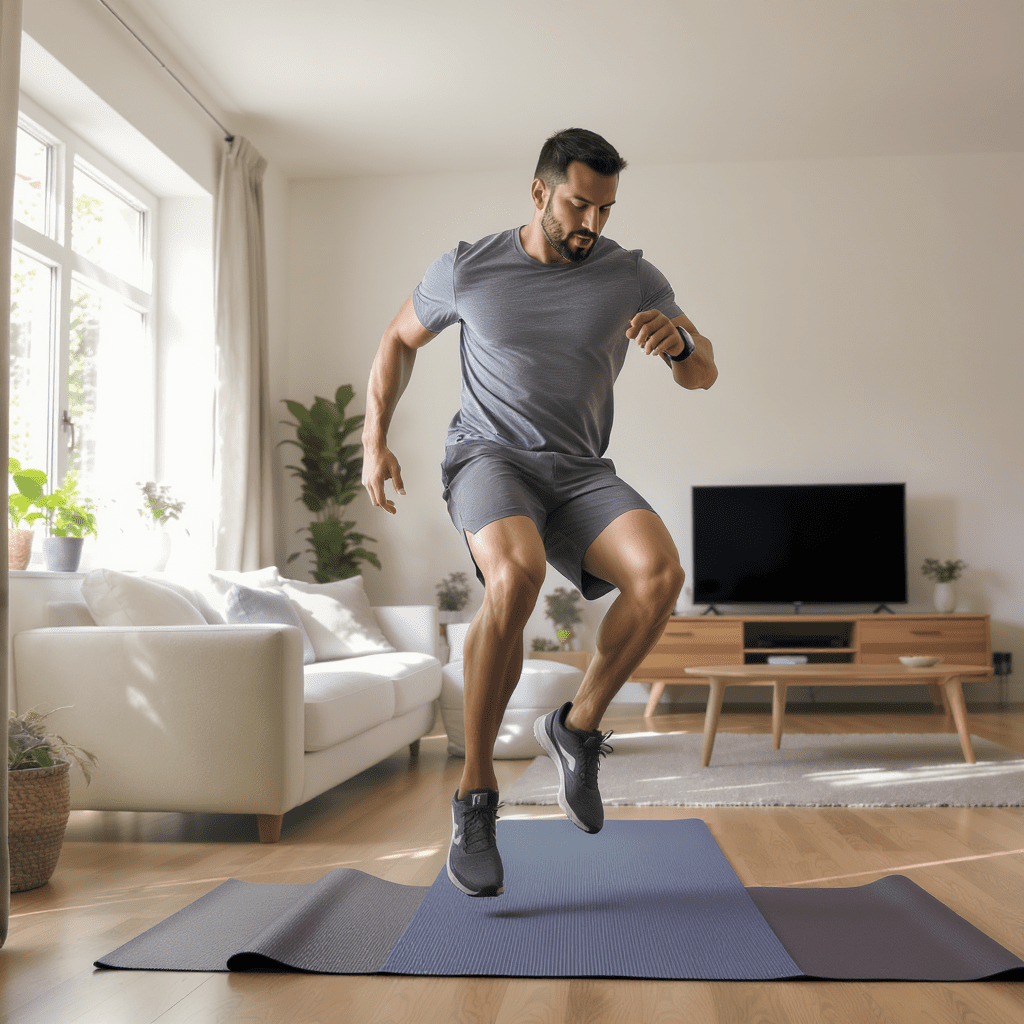
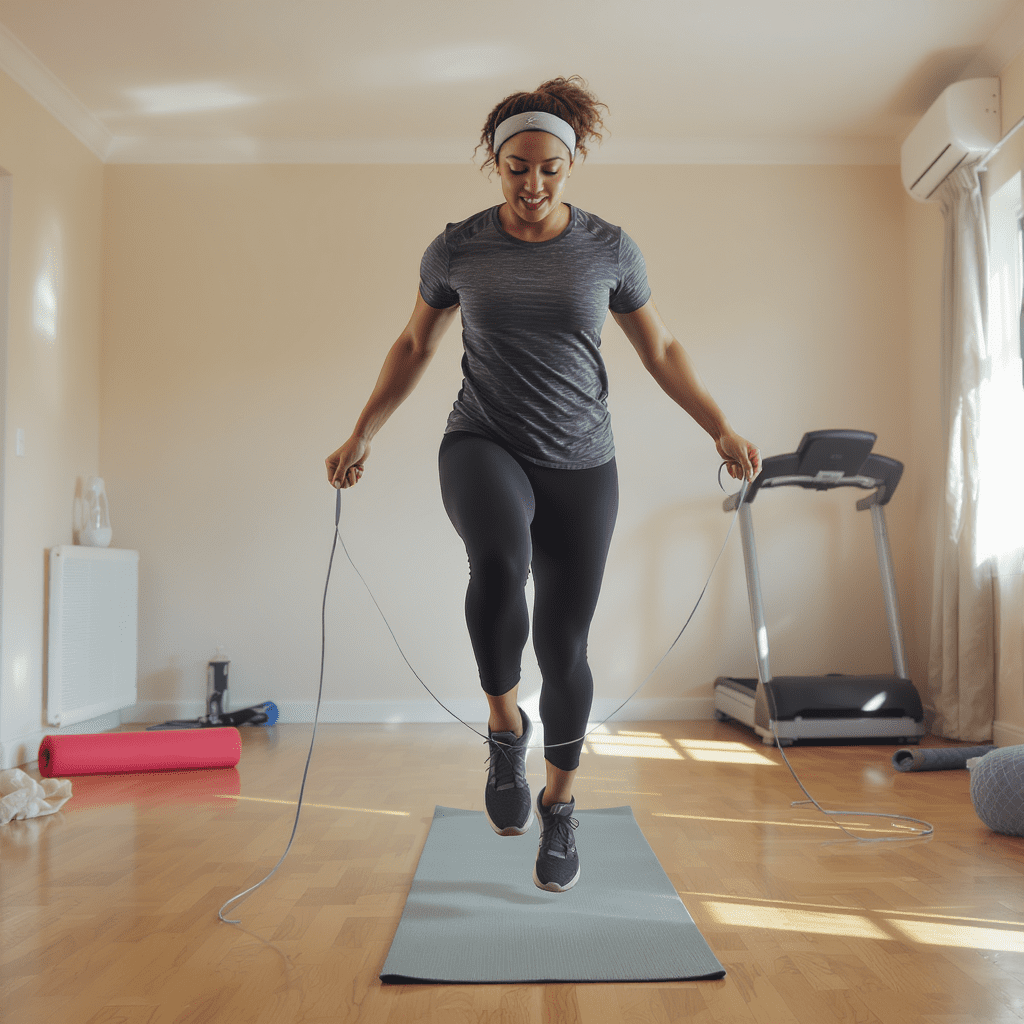
1. Time It Right
Early morning workouts may provide an additional calorie burn due to fasted exercising, but the best time is whenever you feel most energized and can commit consistently.
2. Optimize Intensity
Monitor your heart rate zones to ensure you’re working at the right intensity:
- Fat-burning zone is generally 50-70% of your maximum heart rate.
- For HIIT, aim for 80-90% during high-intensity intervals.
3. Progress Gradually
Increase your workout intensity, duration, or frequency over time. Adding an extra five minutes or incorporating a more challenging modification keeps your workouts effective and engaging.
- Cross-training: Incorporate different forms of exercise, such as yoga or swimming, to challenge your body and prevent plateaus.
- Periodization: Plan your workouts in phases to avoid burnout and optimize performance. For example, have a strength phase where you gradually increase weights and an endurance phase where you focus on increasing the duration of your workouts.
4. Track Your Progress
Documenting your progress serves as a motivator and helps you see how far you’ve come. Use fitness apps or journals to track:
- Workouts completed
- Weight changes
- Reps and sets achieved
- Personal bests
4. Prioritize Recovery
Recovery is just as important as the workout itself. Incorporate rest days into your routine to allow your body to repair and prevent overtraining. Include activities such as stretching, yoga, or foam rolling to ease muscle tension and improve flexibility. Staying hydrated and getting adequate sleep also play a crucial role in promoting recovery and overall performance.
5. Track Your Progress
Keeping a workout journal or using fitness apps to log your exercises can help you stay accountable and measure improvements over time. Celebrate milestones, whether it’s lifting heavier weights, running a longer distance, or simply feeling more energized. Recognizing progress, no matter how small, can keep you motivated.
6. Stay Consistent
Dedicate at least 150 minutes per week to moderate-intensity cardio (e.g., LISS) or 75 minutes to high-intensity activities (e.g., HIIT). Incorporate strength training at least twice a week, targeting all major muscle groups. Consistency is key in achieving and maintaining fitness goals. Skipping workouts or overexerting yourself can hinder progress. Listen to your body and adjust your routine accordingly.
In addition to regular exercise, maintain a consistent sleep schedule of 7-9 hours per night. Lack of sleep can affect hormone levels, appetite, and energy levels, making it harder to stick to a workout routine.
Consistency also applies to nutrition. Aim for balanced meals with lean proteins, healthy fats, complex carbohydrates, and plenty of fruits and vegetables. Avoid fad diets or extreme restrictions that are not sustainable long-term. Practice moderation and allow yourself

Post-Workout Nutrition Tips for Weight loss
What you eat after your workout is just as important as the effort you put in. Post-workout meals support recovery and optimize fat loss:
- Protein-Rich Foods: Consuming protein helps repair and rebuild your muscles. Great options include eggs, Greek yogurt, or a protein smoothie.
- Complex Carbs: Replenish energy stores with foods like whole grains, sweet potatoes, or quinoa.
- Stay Hydrated: Rehydrate by drinking plenty of water or adding electrolytes if you had a particularly intense session.
- Timing Matters: Aim to eat within 30-60 minutes post-exercise for maximum benefit.
People Also Ask
What are the best cardio exercises for weight loss at home?
The best cardio exercises for weight loss at home include HIIT workouts like burpees and mountain climbers, no-equipment moves like jumping jacks and high knees, and low-impact cardio such as brisk walking in place or dance aerobics. These options maximize calorie burn and fit a variety of fitness levels.
Can I lose weight with just cardio exercises at home?
Yes, you can lose weight with just cardio exercises at home if you stay consistent and combine your workouts with a balanced, calorie-controlled diet. Cardio boosts calorie expenditure and fat loss, especially when performed regularly and at the right intensity.
Which burns more fat: HIIT or LISS?
HIIT typically burns more fat and calories in a shorter amount of time due to the EPOC effect, which increases calorie burn post-exercise. LISS also promotes fat oxidation but requires longer sessions to achieve similar results.
How often should I do cardio at home for weight loss?
For effective weight loss, aim for at least 150 minutes of moderate-intensity cardio or 75 minutes of high-intensity cardio per week. Spread sessions throughout the week for best results and long-term consistency.
What should I eat after home cardio workouts for fat loss?
Post-workout nutrition should include a combination of protein and complex carbohydrates to aid recovery and support fat loss. Examples include a protein smoothie with fruit or chicken and brown rice within 30-60 minutes after exercise.
Are no-equipment cardio workouts effective for beginners?
Absolutely! No-equipment cardio workouts like marching in place, modified burpees, and basic jump rope movements are excellent for beginners. They’re low cost, easy to modify, and help build endurance and burn fat safely.
Conclusion
Cardio exercises at home offer a practical, cost-effective way to lose weight, improve fitness, and prioritize your health. Whether you prefer the brief intensity of HIIT or the steady pace of LISS, there’s a workout for everyone. Remember to incorporate no-equipment exercises, tailor your workouts to your fitness level, and support your efforts with healthy post-workout nutrition.
Now is the perfect time to take that first step toward your fitness goals. Jump into action with a simple 20-minute workout, fuel your body wisely, and watch your progress unfold. Every small effort adds up—start today and stay consistent for results you’ll be proud of!
M. Saim Akhtar
Certified Health Content Specialist at HealthBoostMax. INFS-qualified nutrition researcher with 5+ years of evidence-based health writing. Focus areas: health wellness Information, preventive medicine, nutritional biochemistry, and fitness science.
Fitness & Exercise
“Morning Yoga Routine for Beginners: 30-Minute Flow to Reduce Cortisol in 2025
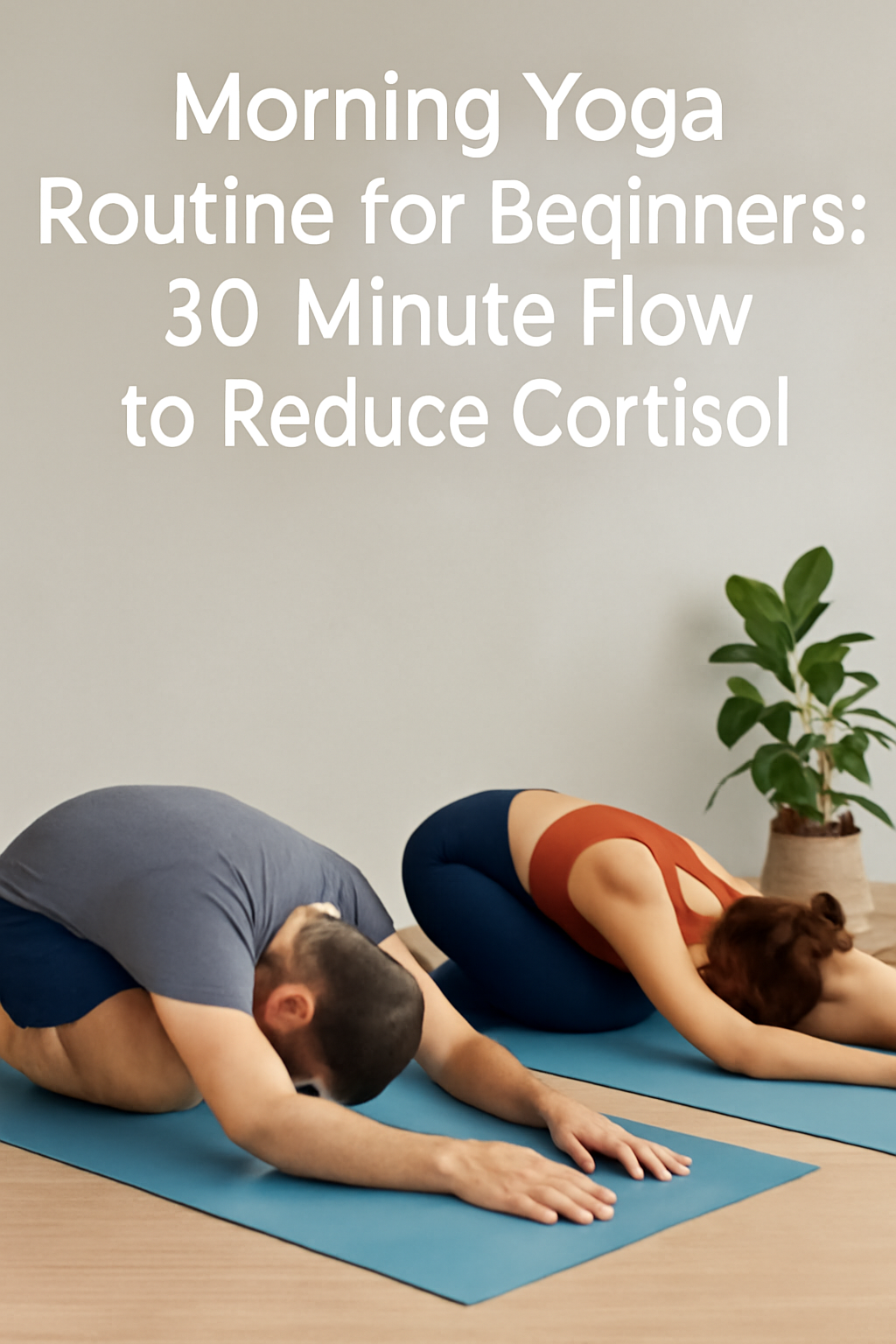
Table of Contents
Morning yoga is a powerful tool to kickstart your day, especially when practiced in alignment with your body’s natural circadian rhythm. By engaging in a gentle yoga flow, beginners can reduce cortisol levels, activate the spine, and enhance overall flexibility. This 30-minute morning routine is specifically designed to help regulate the body’s stress response and improve your adrenal health through mindful movement and deep breathing.
Focusing on poses that stimulate the vagus nerve, this sequence aims to balance energy levels and reduce stress. Whether you’re new to yoga or looking for a gentle way to ease into your day, this routine will set a calming tone and improve flexibility while promoting adrenal balance. By incorporating breathing cues, modifications for tight hamstrings, and key poses, you’ll create a foundation for a more balanced morning.
Why Morning Yoga Matters: The Science Behind Cortisol and the Adrenals
Cortisol, often referred to as the “stress hormone,” follows a natural rhythm throughout the day. It peaks in the early morning to help us wake up, and gradually decreases as the day progresses. However, chronic stress and misaligned routines can cause an excess of cortisol, negatively impacting adrenal health and leading to symptoms like fatigue, anxiety, and difficulty sleeping.
Yoga, particularly gentle movements and stretches in the morning, helps regulate cortisol production by stimulating the vagus nerve and reducing stress. A mindful yoga practice is not only beneficial for mental clarity but also enhances physical health, particularly the spine, flexibility, and overall energy flow. The poses selected in this routine specifically support adrenal function and encourage a balanced, calm start to the day.
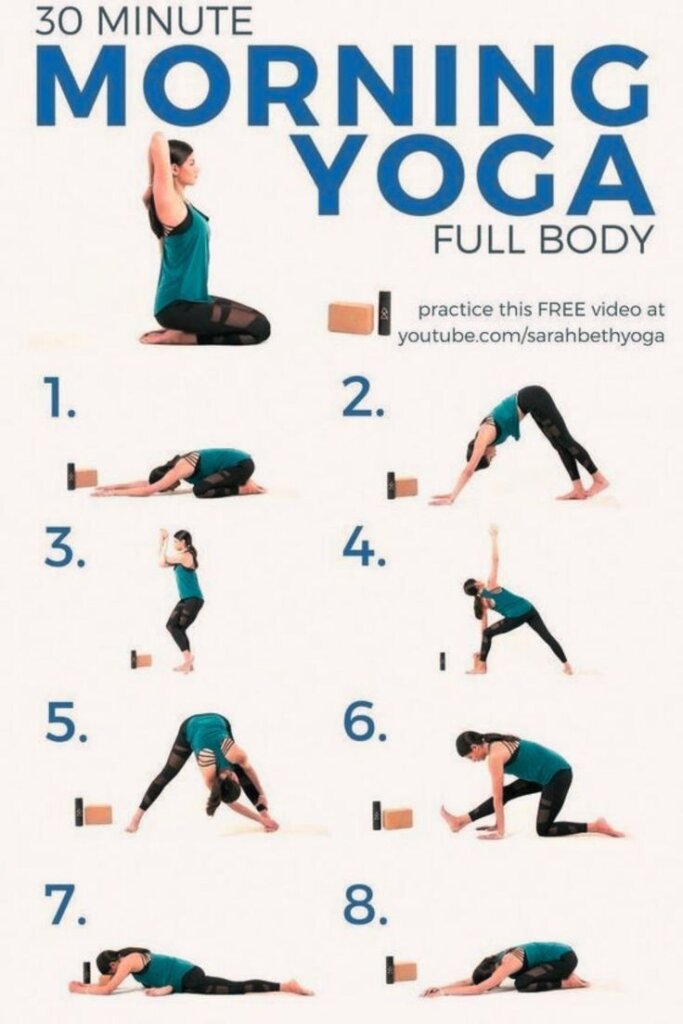
30-Minute Beginner Yoga Routine for Cortisol Regulation
Warm-Up (5 Minutes)
- Seated Breath Awareness (1 Minute)
- Sit cross-legged, spine tall. Close your eyes and focus on slow, deep inhales through your nose and exhales through your mouth.
- Breath-sync cue: Inhale for 4 counts, exhale for 4 counts. Continue for 1 minute.
- Benefit: This calming practice activates the parasympathetic nervous system, reducing cortisol levels.
- Gentle Spinal Twists (2 Minutes)
- Sit upright and inhale to lengthen your spine. On your exhale, twist to the right, placing your left hand on your right knee and your right hand behind you for support. Hold for 3 breaths, then switch sides.
- Modification for tight hamstrings: Keep your legs extended out in front of you for a modified seated twist.
- Benefit: Spinal twists gently activate the spine, improving flexibility and reducing tension.
- Cat-Cow Flow (2 Minutes)
- Start in a tabletop position, hands under shoulders and knees under hips. Inhale, arch your back into cow pose, and exhale, round your spine into cat pose.
- Breath-sync cue: Move with your breath, linking each movement with an inhale or exhale.
- Benefit: This flow gently warms up the spine, activating the nervous system and increasing circulation.
Main Flow (20 Minutes)
Modified Sun Salutation A (5 Minutes)
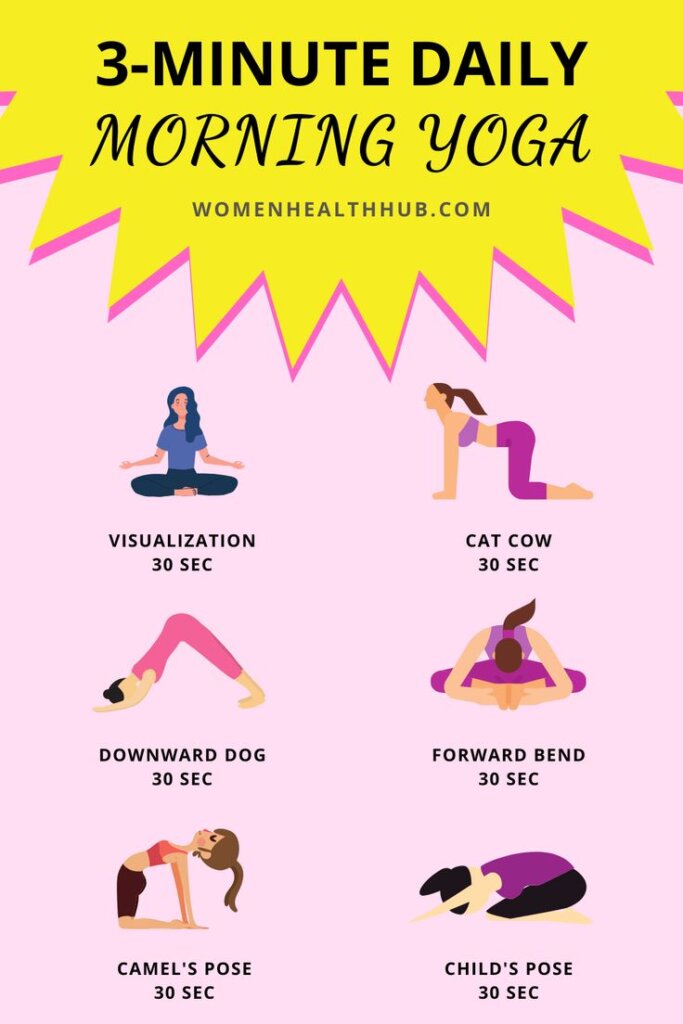
- Start in mountain pose (Tadasana). Inhale, reach your arms overhead, and exhale, fold forward into a forward bend. Inhale to halfway lift, then exhale, step back into plank pose. Lower down to the mat, inhale into cobra or upward dog, and exhale, press back into down dog.
- Modification for tight hamstrings: Bend the knees in forward fold and downward dog to protect the hamstrings.
- Benefit: This foundational sequence promotes flexibility, spinal activation, and energizes the body.
Low Lunge (Anjaneyasana) (3 Minutes)
- From down dog, step your right foot between your hands into a low lunge. Inhale, lift your torso up, reaching your arms overhead. Hold for 3-5 breaths, and then switch sides.
- Breath-sync cue: Breathe deeply into your chest to open the heart and relieve tension in the hips.
- Benefit: Opens the hips, stretches the hamstrings, and enhances blood flow to the legs, balancing the adrenal glands.
Cobra Pose (Bhujangasana) (2 Minutes)
- Lie on your stomach with hands placed under your shoulders. Inhale to lift your chest off the mat, keeping your elbows bent and close to your sides. Hold for 3-5 breaths.
- Benefit: Strengthens the back muscles and stimulates the vagus nerve, aiding in cortisol regulation.
Child’s Pose (Balasana) (2 Minutes)
- From the tabletop, lower your hips back to your heels, stretching your arms out in front and resting your forehead on the mat. Hold for 3-5 breaths.
- Breath-sync cue: Allow your exhale to deepen as you relax further into the stretch.
- Benefit: This resting pose calms the nervous system and helps to restore balance.
Bridge Pose (Setu Bandhasana) (3 Minutes)
- Lie on your back with your knees bent and feet flat on the floor. Press your feet into the ground as you lift your hips toward the sky, clasping your hands underneath your back.
- Modification: Place a block under your sacrum for more support.
- Benefit: Opens the chest, strengthens the back, and reduces stress by stimulating the vagus nerve.
Seated Forward Fold (Paschimottanasana) (3 Minutes)
- Sit with your legs extended straight in front of you. Inhale to lengthen the spine, and exhale to fold forward, reaching for your feet.
- Modification for tight hamstrings: Keep a slight bend in your knees.
- Breath-sync cue: With each inhale, lengthen the spine; with each exhale, fold deeper.
- Benefit: This pose stretches the hamstrings and relieves tension in the lower back, aiding in flexibility.
Cool-Down (5 Minutes)
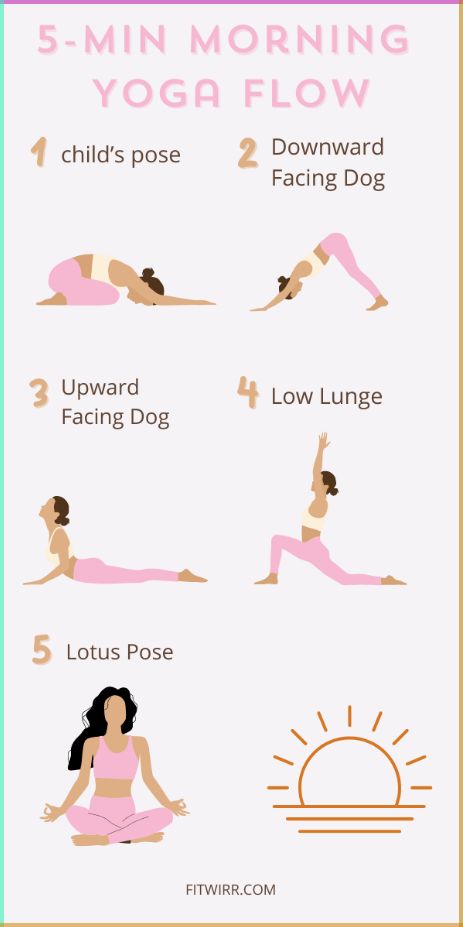
Legs Up the Wall Pose (Viparita Karani) (3 Minutes)
- Sit with one hip against a wall and gently swing your legs up, resting them against the wall while lying back on the floor. Relax your arms at your sides and breathe deeply.
- Benefit: This restorative pose improves circulation, calms the nervous system, and reduces stress.
Savasana (Corpse Pose) (2 Minutes)
- Lie flat on your back, arms extended by your sides, palms facing up. Close your eyes and let go of any tension in your body. Focus on your breath and allow your body to relax completely.
- Benefit: Deep relaxation that calms the body, rebalances cortisol levels, and improves mental clarity.
Key Poses for Adrenal Balance
- Cobra Pose (Bhujangasana): Opens the chest and stimulates the vagus nerve to promote a sense of calm.
- Low Lunge (Anjaneyasana): Helps activate the legs and hips, reducing tension and improving circulation.
- Bridge Pose (Setu Bandhasana): Strengthens the back and stimulates the adrenal glands for better energy balance.
Post-Session Hydration Tips
After your morning yoga session, it’s important to hydrate to support your body’s recovery and replenish lost fluids. Try a glass of water with a pinch of Himalayan salt or a herbal tea to further support hydration. Drinking water can help flush out toxins and rehydrate the body, supporting the balance you’ve achieved through yoga.
People Also Ask:
- What are the best yoga poses for reducing cortisol?
- Poses like Cobra, Child’s Pose, and Bridge are excellent for reducing cortisol by stimulating the vagus nerve and promoting relaxation.
- How can beginners start a yoga routine in the morning?
- Start with gentle movements like seated breathing and spinal twists, then progress to sun salutations and simple stretches to improve flexibility.
- What time of day is best for yoga to lower cortisol?
- Morning is ideal for yoga as it aligns with the body’s natural cortisol peaks, helping to reduce stress and energize the body for the day.
- Can yoga help with adrenal fatigue?
- Yes, yoga helps restore balance to the adrenal glands by reducing cortisol levels and improving overall relaxation.
- How can I modify poses for tight hamstrings in yoga?
- You can modify poses like forward folds and lunges by bending the knees slightly or using props like blocks to support your flexibility.
Conclusion
This 30-minute beginner yoga routine is a powerful way to align your body with its natural circadian rhythm, reduce cortisol, and activate the spine. By incorporating deep breathing, mindful movements, and modifications for tight hamstrings, you can promote adrenal balance and set a calming tone for your day. Don’t forget to hydrate post-session to enhance the benefits of your practice. Embrace this gentle yet powerful routine, and experience the positive changes in your flexibility, energy, and overall well-being.
Ready to reduce stress and increase flexibility? Start your morning with this beginner-friendly yoga routine, and feel the difference!
M. Saim Akhtar
Certified Health Content Specialist at HealthBoostMax. INFS-qualified nutrition researcher with 5+ years of evidence-based health writing. Focus areas: health wellness Information, preventive medicine, nutritional biochemistry, and fitness science.
Fitness & Exercise
How to do Kegel Exercises for Boosting Testosterone level | What 7 Studies Reveal

Main Key Points
Boosting testosterone levels naturally is a topic of growing interest among men seeking to optimize their health and performance. While strength training and diet are widely acknowledged methods, Kegel exercises—the targeted training of pelvic floor muscles—present a lesser-known yet scientifically backed approach to enhancing hormonal balance. Though traditionally linked to improved erection quality, emerging research suggests that Kegels may also increase testosterone production by strengthening the connection between pelvic floor muscles and free testosterone.
This article dives deep into the science, shares a step-by-step Kegel protocol, debunks myths around their usage, and explores complementary biohacks to maximize their impact. By the time you finish reading, you’ll gain unique insights into incorporating Kegels into your testosterone-boosting regimen.
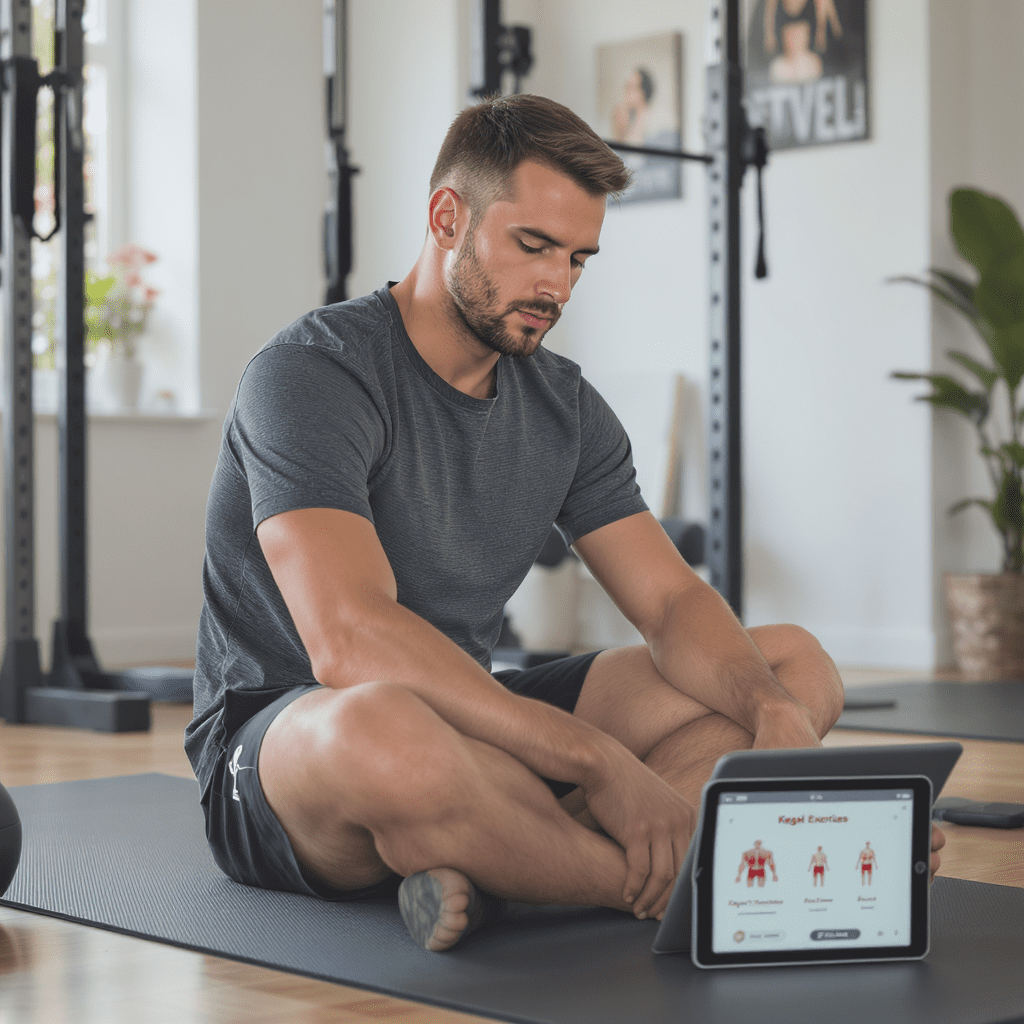
Kegels & Boosting Testosterone: What 7 Studies Reveal
Studies exploring the relationship between pelvic floor muscle training and testosterone reveal promising results. These insights bridge the gap between targeted exercise and endocrine health.
1. Pelvic Floor Muscle Strength and Androgen Production
A study found that stronger pelvic floor muscles positively affect Leydig cell function in the testes. These cells are responsible for producing testosterone. The underlying mechanism lies in increased blood flow and neuromuscular activation in the pelvic region.
2. Kegels and Luteinizing Hormone (LH)
Research suggests that pulsed Kegel contractions may indirectly up-regulate luteinizing hormone (LH) secretion, a key driver of testosterone synthesis. LH activates the Leydig cells, leading to more efficient androgen production.
3. Reverse Kegels and Cortisol Reduction
Reverse Kegels, which involve controlled relaxation of pelvic muscles, are linked to lowering cortisol, the stress hormone that inhibits testosterone. Studies highlight a direct correlation between stress mitigation and rising testosterone levels.
4. Blood Circulation and Hormonal Health
Enhanced circulation from consistent Kegel exercises improves oxygen delivery and metabolite clearance in the testes, a factor crucial for maintaining high testosterone levels.
5. Prostate Health
Pelvic floor strengthening improves prostate health, which is vital for androgen balance. Studies suggest that a healthy prostate enables consistent testosterone synthesis and reduces DHT-related complications.
6. Comparisons with Compound Movements
While deadlifts and squats are often considered the gold standard for testosterone responses, Kegels specifically target the pelvic floor. For men with less time for full-body workouts, this focused intervention offers a viable alternative.
7. Synergy with Biohacking Strategies
Combining Kegels with other natural supplements and techniques, such as Tribulus terrestris, shows enhanced results in boosting LH and testosterone levels.
By exploring these studies, we see that Kegel exercises contribute far more than just improved pelvic floor function. They’re a key player in natural hormone optimization.
The 5-Second Testosterone Kegel Protocol
To make the most of Kegel exercises for testosterone, follow this simple yet highly effective routine.
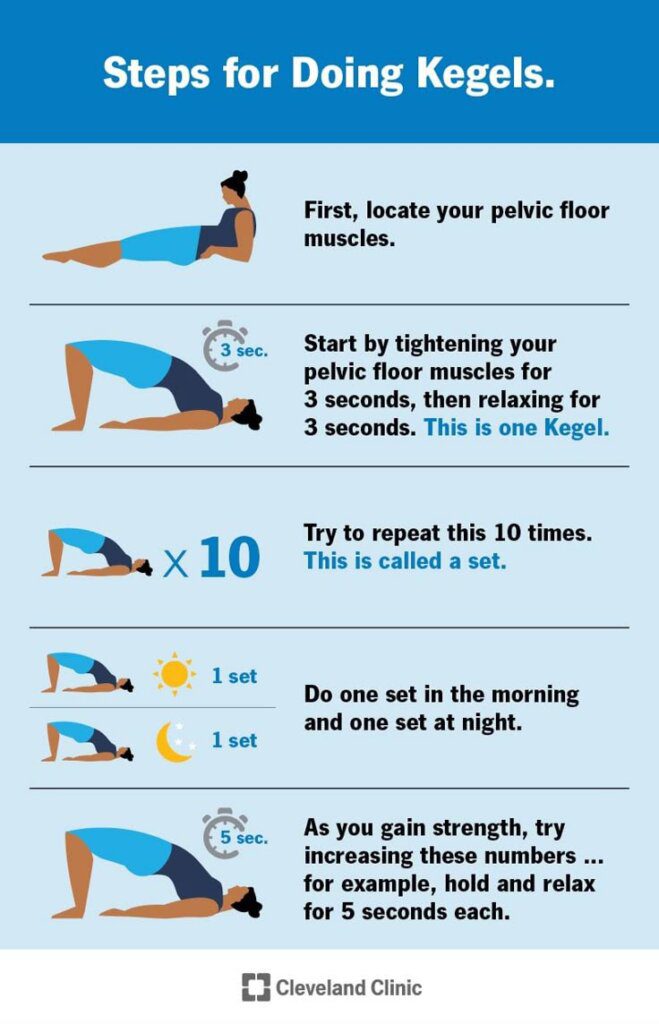
Step-by-Step Routine
- Find the Right Muscles
Identify your pelvic floor muscles by stopping urine flow midstream or tightening the muscles that prevent flatulence. These are the muscles you’ll engage during Kegels.
- The Basic 5-Second Contraction
-
- Contract the pelvic floor muscles tightly for 5 seconds.
- Release and relax for 5 seconds.
- Perform 10-15 reps for one set.
- Pulsed Contractions for LH Secretion
-
- Perform rapid contractions (tighten and relax in 1-second intervals).
- Continue for 30 seconds, then pause for a 10-second rest.
- Repeat 3 cycles.
- Reverse Kegels
-
- Focus on gentle relaxation of the pelvic floor. Imagine pushing out slightly as if urinating or bearing down gently.
- Hold the relaxation for 5 seconds and repeat 10 times.
- Create a Schedule
-
- Start with two sessions per day (morning and evening). Gradually increase intensity as your muscles strengthen.
This balanced protocol addresses both contraction and relaxation, ensuring testosterone-boosting benefits while avoiding overtraining
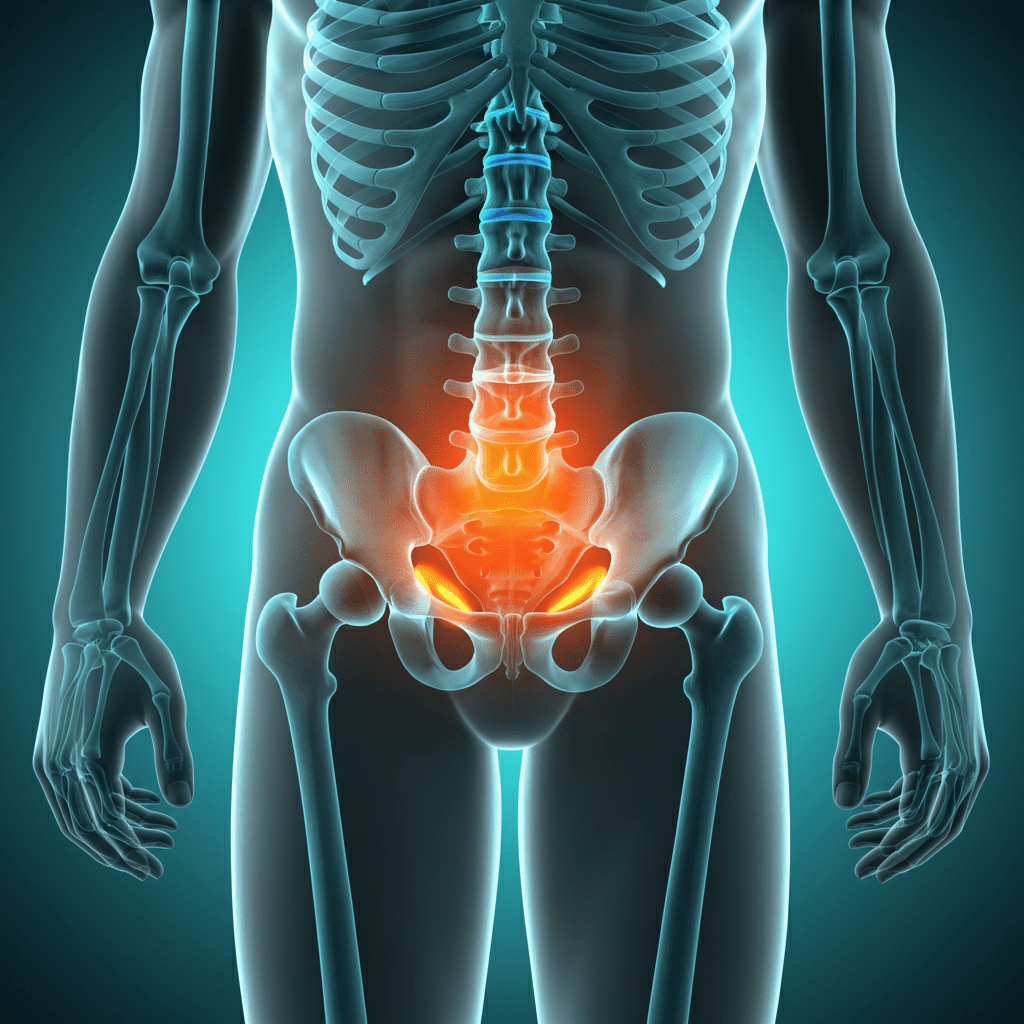
Why Most Men Do Kegels Wrong for Hormones
Kegels are often misunderstood or improperly executed, which can hinder their benefits—especially hormonal ones. Here are common mistakes to avoid:
- Overtraining
Excessive Kegels can cause chronic pelvic tension, leading to decreased blood flow and even testosterone suppression. Stick to the recommended routine.
- Neglecting Reverse Kegels
Exclusively focusing on contractions without incorporating relaxation exercises risks imbalances, which may increase cortisol levels.
- Relying on Them Alone
While effective, Kegels may not be sufficient if not paired with a healthy lifestyle, including resistance training, proper nutrition, and stress management.
- Improper Form
Engaging surrounding muscles (like glutes or abs) instead of isolating the pelvic floor minimizes the effectiveness of Kegels.
Avoiding these errors ensures you’ll get the full hormonal benefits.
Biohacking Combos for Maximum Results
Maximize your testosterone-boosting gains by combining Kegels with these powerful biohacks:
1. Cold Exposure
Post-workout cold showers help regulate cortisol and support a testosterone-friendly environment.
2. Zinc Supplementation
Zinc aids in maintaining healthy testosterone levels and enhances the effects of pelvic floor strengthening on androgen production.
3. Tribulus Terrestris
This herbal supplement complements Kegels by stimulating LH and boosting testosterone.
4. Anterior Pelvic Tilt Correction
Improving pelvic alignment through stretches and posture correction prevents tension that could hinder Kegel effectiveness.
Together, these techniques create a holistic approach to hormonal optimization.
Alternatives for Erectile vs. Hormonal Goals
Not all men pursue Kegels for the same reasons. If your focus is erectile health or general hormonal benefits, consider these distinctions:

For Erectile Health
-
- Focus on regular Kegels, with a slight emphasis on reverse Kegels for relaxation.
- Combine with cardiovascular exercises to improve circulation.
For Hormonal Balance
-
- Pair Kegels with resistance training, like deadlifts. Compound lifts elevate testosterone by engaging large muscle groups.
Understanding your goals allows you to tailor your exercise and bio-hacking strategies effectively.
Additional Tips for Success
- Consistency is Key: Like any other exercise, consistency is crucial to see tangible results. Aim to perform your Kegels and other supporting exercises daily or on a regular schedule.
- Mind-Muscle Connection: Focus on proper form and fully engaging the correct muscles during each repetition. Avoid compensating with surrounding muscles like the glutes or thighs.
- Track Your Progress: Keep a journal of your exercise routines and any noticeable improvements in strength, hormonal balance, or overall health. Tracking progress can help you stay motivated and refine your approach if needed.
- Combine with a Healthy Lifestyle: Pair your exercise regimen with a balanced diet, stress management techniques, and adequate sleep to maximize results.
By integrating these tips into your routine, you can enhance not only your physical performance but also your overall well-being.
People also ask
Do kegels boost men testosterone?
It is true, Kegels can possibly boost testosterone given the argument that they increase the strength of pelvic muscles and blood circulation.
What are the Reverse Kegels and what do they do to help cortisol?
The reverse Kegels consists of relaxing pelvic muscles, which can reduce the cortisol level and, therefore, contribute to the enhancement of the testosterone.
What is the time frame of the results of Kegel exercises?
With the regular practice, noticeable effects on force and hormonal equilibrium may be observed within 4-6 weeks.
Which is more effective, Kegels or deadlifts when it comes to testosterone?
These kinds of exercises are different and have different advantages, as Kegels train the pelvic floor and deadlifts train the large muscles to enhance a systemic hormone boost.
Does overtraining Kegel reduce testosterone?
Yes, over training may have an adverse effect causing pelvic tension and cortisol to rise which affects the level of testosterone.
Conclusion
Kegels are a surprisingly versatile tool for boosting testosterone levels naturally. By strengthening pelvic floor muscles, improving blood flow, and optimizing hormonal pathways, they offer benefits far beyond what’s traditionally assumed. Incorporating the 5-Second Testosterone Kegel Protocol, avoiding overtraining, and combining exercises with bio-hacking techniques can amplify results. Whether you’re focused on hormone optimization or erectile health, this practical yet science-backed solution deserves a place in your regimen.
Consistency is key when it comes to seeing the full benefits of the protocol. Start by integrating the routine into your daily schedule, ensuring you dedicate a few minutes each day to practicing the exercises. Over time, this commitment can lead to noticeable improvements in energy levels, physical performance, and overall vitality. Additionally, pairing the protocol with a balanced diet rich in essential nutrients such as zinc, magnesium, and vitamin D can further support hormonal health. Staying hydrated and prioritizing quality sleep are also crucial factors that can complement the effects of the exercises, creating a holistic approach to boosting testosterone naturally.
Start incorporating these strategies into your routine and take charge of your hormonal health naturally!
M. Saim Akhtar
Certified Health Content Specialist at HealthBoostMax. INFS-qualified nutrition researcher with 5+ years of evidence-based health writing. Focus areas: health wellness Information, preventive medicine, nutritional biochemistry, and fitness science.
Fitness & Exercise
How to Lose Weight Fast in 7 Days Without Losing Muscle

Key Points
If you don’t think it’s possible to lose weight quickly and sustainably, reconsider. There is no reason to starve oneself on extraordinary diets and work out at the gym to lose weight fast. By using science-based strategies such as metabolic priming, NEAT boosting, and carb cycling, you will experience the results within one week. You will not only lose weight, but you will also retain muscle and improve your health at the same time. A 7-day rapid fat loss plan will help you concentrate on healthy habits that are easily sustainable, the foods that suppress your hunger, and the efficient workout you can perform at home. We will also gather popular pitfalls that should be avoided to make a complete revolution in your attitude toward fat burning, without spoiling all the rest.
You will learn how to best use your nutrition and practices, as well as overcome some stumbling blocks, such as water retention and metabolic damage. This plan covers your concerns about muscle retention and optimizing thyroid health. Use this guideline to initiate weight loss and boost your confidence.
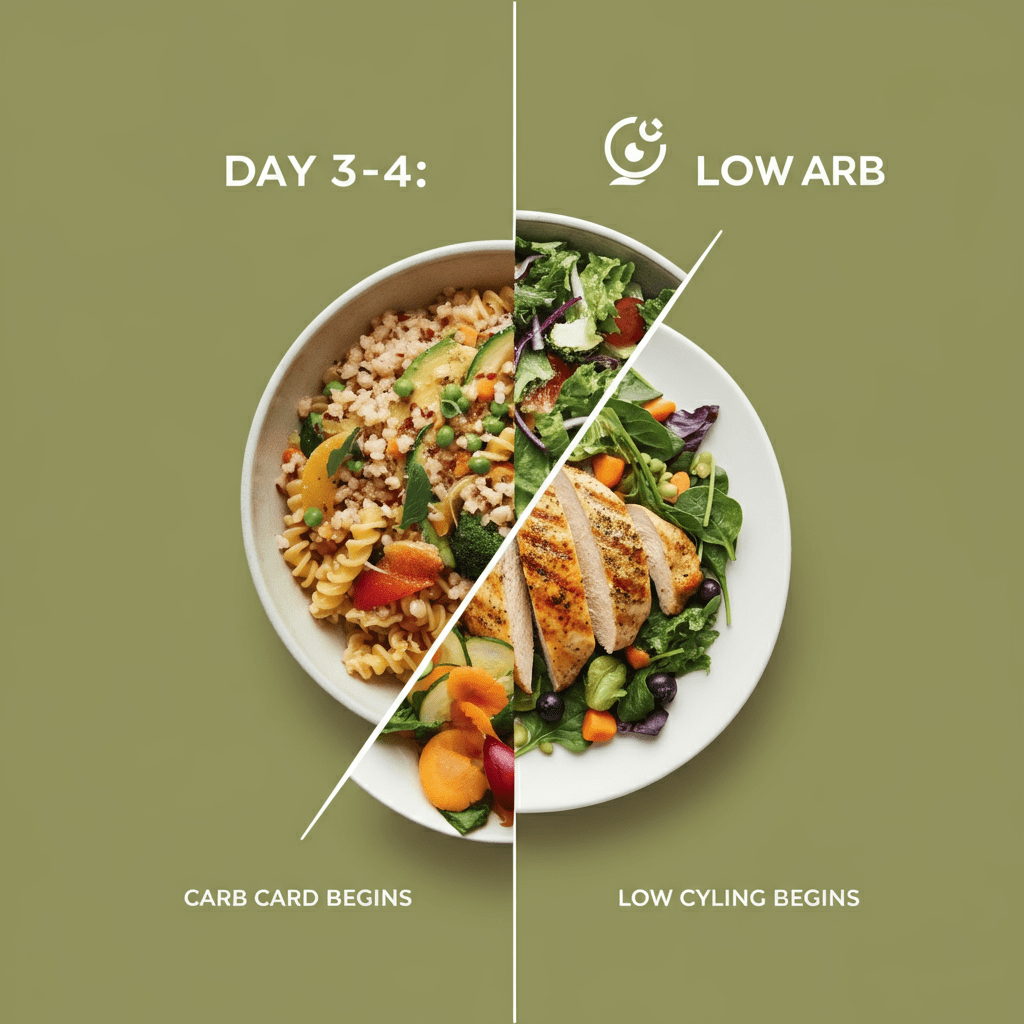
7-Day Plan for Quick Results
Day 1-2: Metabolic Priming
- Focus: Kickstart your metabolism.
- Portion Hack: Divide your plate—50% vegetables, 25% lean protein, and 25% healthy carbs (quinoa, sweet potato, or brown rice).
- Hunger-Curbing Foods: Start your day with protein-rich breakfasts like eggs or Greek yogurt to stabilize blood sugar levels.
- Activity Tip: Maximize NEAT (Non-Exercise Activity Thermogenesis) by walking 10,000 steps daily and incorporating small movements like stretching or pacing while on calls.
Day 3-4: Carb Cycling Begins
- Focus: Enhance fat burn while maintaining energy.
- Strategy:
- Alternate high-carb and low-carb days. For example, eat starchy carbs post-workout on high-carb days, and focus on veggies and protein on low-carb days.
- Workout:
- Try low-impact HIIT workouts (e.g., brisk walking with short sprints) to boost calorie burn without stressing joints.
Day 5-6: Boost Protein and Hydration
- Focus: Minimize water retention and support muscle retention.
- Hacks:
- Sip lemon water throughout the day to reduce bloating.
- Increase protein consumption with lean chicken, turkey, and plant-based options like tofu or lentils.
- Activity:
- Introduce bodyweight strength exercises like planks, push-ups, or squats for 15-20 minutes.
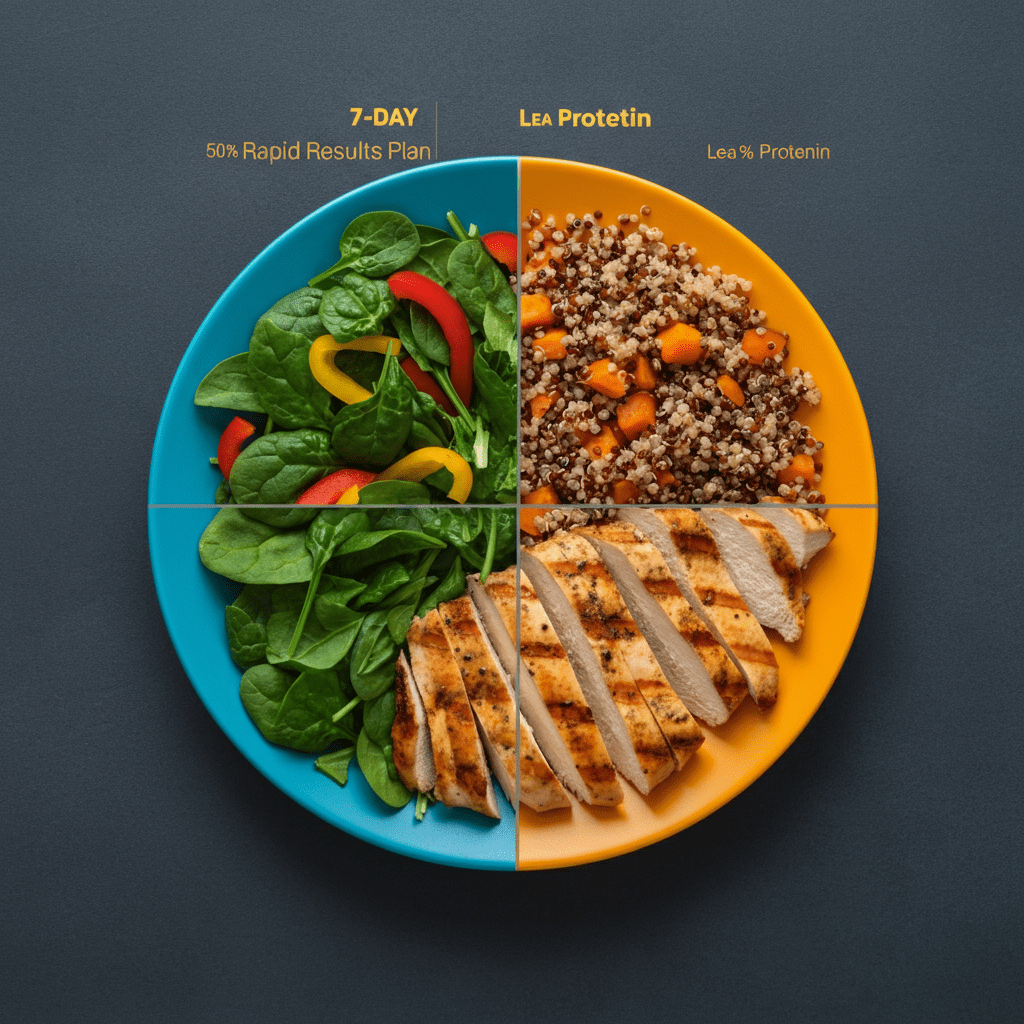
Day 7: Recovery and Reflection
- Focus: Allow your body to recover and consolidate progress.
- Tips:
- Make sleep optimization a priority; to control hunger hormones, strive for 7-9 hours.
- Use this day to reassess portion sizes and maintain an active recovery, like a long walk or yoga session.
By structuring your week this way, you can stay energized and consistently shed fat without feeling deprived or overtired.
5 Fat Loss Hacks Doctors Use
1. Prioritize Insulin Sensitivity
Eating balanced meals with fiber, protein, and healthy fats can improve how your body handles blood sugar. This reduces fat storage, especially around the midsection.
2. Understand the Fat-Adaptation Timeline
If you’re transitioning to low-carb or keto eating, remember that your body needs 3-7 days to adapt to burning fat for fuel. Stay patient during this metabolic shift.
3. Sleep Optimization
Poor sleep disrupts hormones like leptin and ghrelin, which control hunger and fat storage. Aim to maintain consistent bedtimes and avoid screens before sleeping.
4. Manage Thyroid Health
Include thyroid-friendly foods like seaweed (iodine-rich) and Brazil nuts (a great source of selenium) to support healthy thyroid function while losing weight.
5. Practice Metabolic Recovery
If you’ve followed restrictive diets before, add a “re-feed” meal once a week. Gradually increase calorie intake with nutrient-dense foods to repair metabolic damage.
These doctor-approved techniques can make a significant difference in achieving sustainable fat loss.
6. Incorporate Strength Training
Building lean muscle through strength training can boost your resting metabolic rate, helping you burn more calories even when at rest. Try to work out your main muscle groups two or three times a week.


Why You’re Not Losing Weight (Fix These)
1. Overlooking Hidden Water Retention
High sodium intake, stress, or premenstrual bloating can mask fat loss on the scale. Combat this with potassium-rich foods like bananas or spinach.
2. Ignoring Exercise Variety
Working out the same way over and over again might cause plateaus. Alternate between yoga, swimming, or other exercises that work different muscle areas, or include low-impact HIIT.
3. Overtraining Without Rest
Too much exercise without adequate recovery can cause cortisol spikes, leading to fat storage. Always balance active days with rest or low-intensity activities.
4. Skipping Nutrition Adjustments
Failing to adjust portions or macros as your weight changes may slow progress. Reassess your needs weekly and make incremental updates.
5. Focusing on Rapid Fat Loss Without Sustainability
Short-term fixes without planning for maintenance often result in weight regain. Focus on building long-term habits alongside rapid results. Address these common barriers to push through stagnation and achieve your goals faster.
Before-After Metrics
Tracking your progress is key to understanding what works for your body. Here’s how to do it right:
- Body Fat Percentage:
- Use calipers or smart scales weekly to measure fat loss vs. muscle retention.
- Water Weight:
- Monitor fluctuations using a scale at the same time daily (morning is best). Look for patterns rather than focusing on day-to-day changes.
- Muscle Retention:
- Gauge strength improvement by tracking reps and load over time for bodyweight or weighted exercises.
- Measurements:
- Take waist, hip, and thigh measurements, as inches lost may happen before the scale shows results.
These objective markers give you a clearer picture of how your efforts are paying off.
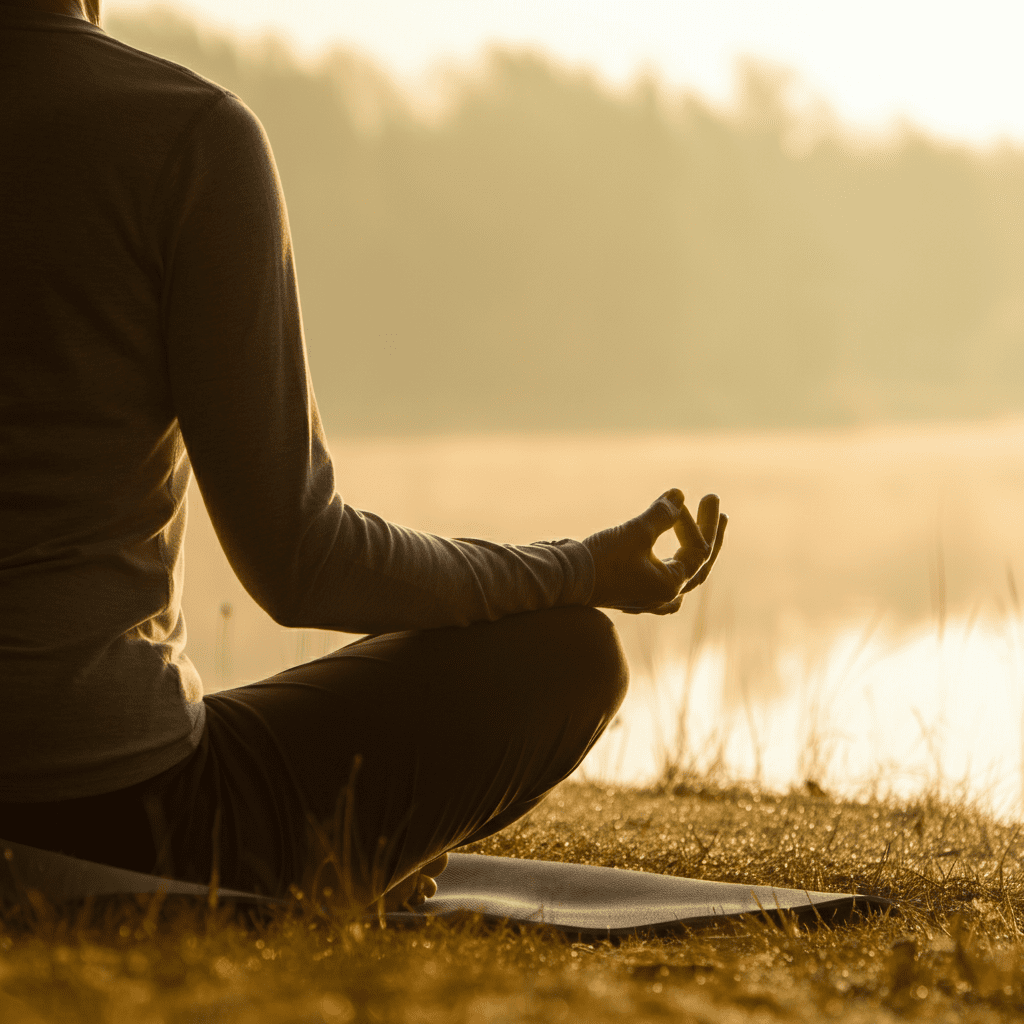
Mistakes to Avoid for Sustainable Weight Lose
Avoid these pitfalls to stay on track:
- Over-Restriction:
- Extremely low-calorie diets slow your metabolism and make fat loss harder. Stick to a moderate caloric deficit.
- Neglecting Thyroid Health:
- Low iodine or selenium intake can impair thyroid function, hindering fat burn.
- Skipping Recovery:
- Overworking your body leads to exhaustion and reduces workout effectiveness. Factor in rest days and prioritize quality sleep.
- Relying on Fad Diets:
- Avoid extreme plans like juice cleanses or unbalanced meal plans. They rarely provide the nutrients needed for sustainable health.
You may prevent setbacks and achieve steady growth by being aware of and avoiding these errors.
Tips for Optimizing Your Health Journey
To maximize your health and fitness efforts, consider implementing these strategies:
- Prioritize Balanced Nutrition:
- Focus on consuming a variety of whole foods, including lean proteins, healthy fats, and complex carbohydrates. Incorporate colorful fruits and vegetables for essential vitamins and minerals.
- Stay Consistent with Exercise:
- To keep motivated, choose things you enjoy doing, like yoga, running, or strength training. The finest benefits can be obtained by combining resistance and cardio training.
- Hydrate Adequately:
- Drinking enough water is crucial for overall health. Proper hydration supports digestion, energy levels, and joint health.
- Set Realistic Goals:
- Establish specific, measurable, and achievable objectives. Breaking down larger goals into smaller milestones can help maintain motivation and track progress.
- Listen to Your Body:
- Pay attention to signs of fatigue or stress, and adjust your routine as needed. Recovery is just as important as effort to ensure long-term success.
By adopting these tips and staying consistent, you’ll be better equipped to achieve a healthier and more sustainable lifestyle.
FAQs (PPA)
What are probable fitness targets to newcomers?
Conditioning Example: A realistic fitness goal during the early stages of the exercise routine could be; exercising 3 times per week, walking a certain amount of steps per day, or getting more flexible. Take baby steps and monitor the progress in the long run.
What can I do to keep me motivated to have a healthy lifestyle?
Maintaining motivation can involve setting achievable goals, perhaps celebrating small victories, finding a workout partner, or keeping a notebook to document your progress.
Why is it important to pay attention to your body when exercising? Being receptive to your body allows you to avoid overtraining, lower the chances of injury and encourage the healing process, which is a key element in the long-term consistency of fitness habits.
What is the advantage of setting up small milestones in a longer goal?
Setting a whole goal in mini objectives breaks the big goal and makes it look smaller, easier to focus, and it gives the feeling of accomplishment at every milestone.
What are the effects of recovery on the general progress of fitness?
Recovery enables muscles to heal, decreases fatigue, and makes the body accustomed to exercise to have greater performance and sustainability.
How can one measure fitness? Monitoring fitness improvement can be done with the help of apps, by keeping a fitness diary, or by evaluating the performance at regular periods of time on a measurement scale such as weight, endurance or strength.
Conclusion
With a combination of science and sound strategy, it is actually possible to change your body within seven days. Fat loss can be achieved by paying attention to metabolic priming, controlled portion meals, carb cycling, and appropriate recovery to shed off stubborn fat and maintain muscle mass. Keeping yourself on track through specific measurements keeps you on your course, and the prevention of such pitfalls ensures success in the long run.
This is the moment to pledge wiser commitments and an environmentally sound strategy to shedding fat. Become fitter, slimmer and more confident within a week! Sign up your 7-day plan and reinvent what is possible of your health.
M. Saim Akhtar
Certified Health Content Specialist at HealthBoostMax. INFS-qualified nutrition researcher with 5+ years of evidence-based health writing. Focus areas: health wellness Information, preventive medicine, nutritional biochemistry, and fitness science.
Fitness & Exercise
Healthy Meal Plans for Men | 3,000-Calorie Muscle-Building Ultimate Guide

Table of Contents
Muscle building does not just mean weight lifting, but it is all about what you put into your body to grow and recover. Knowing how to arrange macros, complement the diet with testosterone-stimulating food, and eat at the right times helps men who strive to increase lean sinew. This guide will help debunk how to make a 3,000-calorie muscle gaining meal plan with the expertise of split macros, the effect of alcohol, and even meal strategies for night and shift workers.
Our article can be useful not only to people who have been going to the gym more than once, but also to newcomers who are at the entrance of their muscle-building adventure. We will go over all the way about how to prep your cruciferous veggies to provide hormonal health to the proper use of cooking oils to increase your testosterone. It is high time to fuel your gains properly. So stay tuned, we have a plan expected to give the results out!
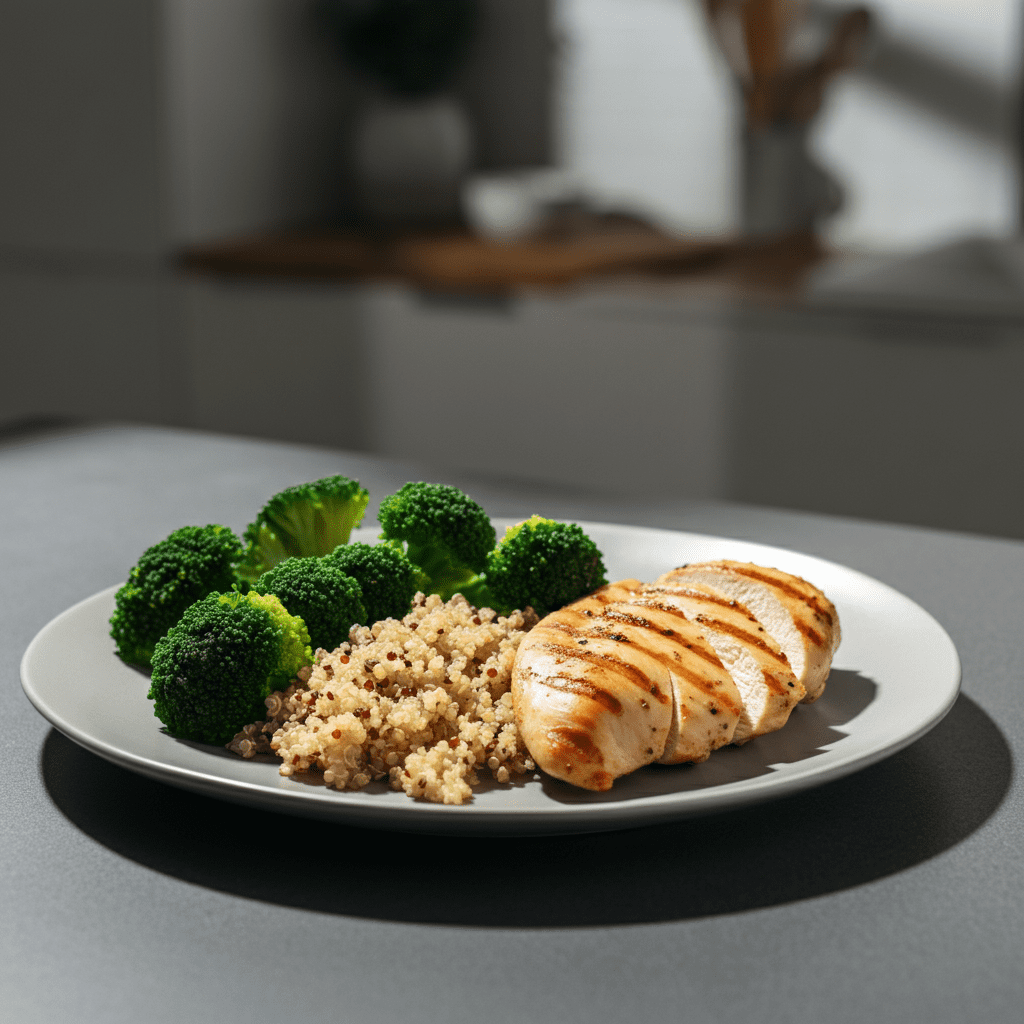
Macro Splits (40/30/30) for Muscle Building
What is the 40/30/30 Macro Split?
Based on 40/30/30 split, 4/5 of the daily calories would be used in carbs, 3/5 on protein and 3/5 on fats. This moderate practice provides sufficient amount of carbs as a source of energy, protein to replenish and develop muscles, and fats to promote a hormone level.
Why 40/30/30 Works for Muscle Growth
- Carbohydrates (40%) provide glycogen to fuel gym performance and muscle repair post-workout. Opt for complex carbs like oatmeal, sweet potatoes, and brown rice.
- Protein (30%) is essential for muscle recovery and hypertrophy. Include high-quality sources like chicken breasts, fish, eggs, and plant-based proteins.
- Fats (30%) support testosterone levels, brain function, and sustained energy. Include healthy fats such as avocados, nuts, seeds, and olive oil.
Sample Meal Plan
- Breakfast: 3 scrambled eggs, avocado toast on whole-grain bread, and black coffee.
- Lunch: Grilled chicken breast, quinoa, and steamed broccoli.
- Dinner: Baked salmon, roasted sweet potato, and sautéed spinach.
- Snacks: Greek yogurt with honey and walnuts, or a handful of almonds.
Testosterone-Boosting Foods
Muscle growth can be increased by consuming the foods that stimulate the production of testosterone. Important nutrients such as zinc, D vitamin and healthy fats are important with regard to ensuring the optimum levels of testosterone.
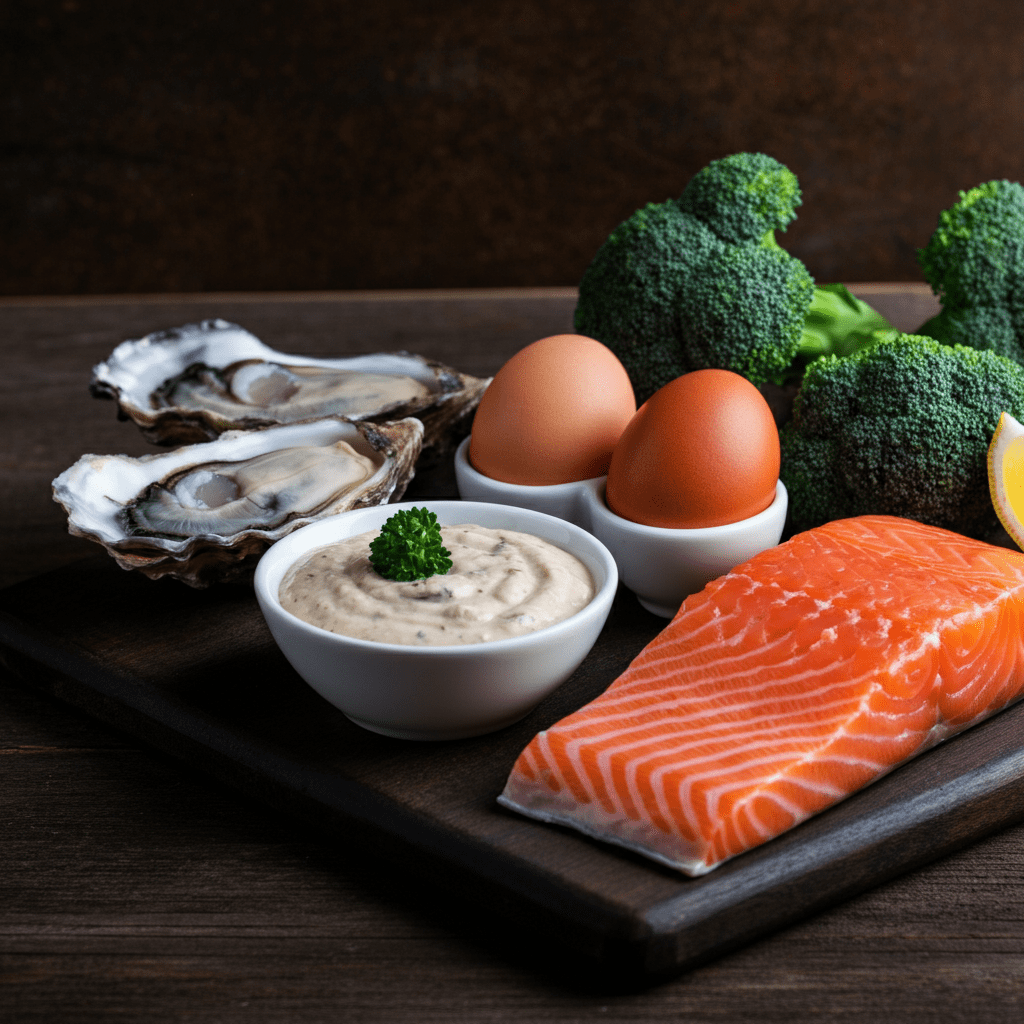
Top Testosterone-Boosting Foods
- Cruciferous Vegetables (broccoli, kale, Brussels sprouts): These help balance hormones by reducing excess estrogen.
- Zinc-Rich Options (oysters, pumpkin seeds, red meat): Zinc is crucial for testosterone production.
- Egg Yolks: Rich in vitamin D and cholesterol, which support testosterone synthesis.
- Fatty Fish (salmon, mackerel, sardines): High in omega-3 fatty acids, promoting overall hormonal health.
Pro Tip for Veggie Prep:
Steam or lightly sauté cruciferous vegetables to retain their hormone-balancing properties without diminishing nutrients.
Hydration Tips
facilitates the vital processes in the organism, including maintenance of body temperature, help in the digestive process and delivery of nutrients. Goal: consume 8-10 cups of water per day and increase depending on the amount you are active and the climate. Add some hydrating foods such as cucumbers, watermelon and oranges to supplement with your water.
Supplement Recommendations
Even though a balanced diet ought to be the primary source of the nutrients, some supplements may help to cover the deficiencies as well as increase the performance leading to the personal needs.
Multi vitamins: You need to make sure that you are taking care of all your basic micronutrient needs.
Protein Powder: It can be helpful in achieving daily protein intake particularly after exercise.
Omega-3 Fatty Acids: Omega-3 Fatty acids promote the health of the heart and mind; they are usually taken as fish Oil supplements.
Vitamin D: Helps the immunity system and bones, particularly among people who do not receive much sunlight.
Whenever you decide to include a new supplement in your routine, it is always better to talk to a healthcare expert or reputable registered dietitian.

Alcohol’s Impact on Muscle Building
Alcohol can prevent production of testosterone and muscle recovery when taken in large amounts though occasional usage is encouraged.
The influence of the Alcohol on Gains
Reduces Protein turnover: This reduces the growth and repair of your body as your body reserves more energy on detoxification.
Decreases Testosterone: Overuse of it can decrease its production that halts muscle growth.
Empty Calories added: Alcohol does not add to your nutriment but adds to your calorie content and this has a tendency of amassing fat.
Smart Decisions Making:
Do you like to take a drink? Well I suppose you would do this in moderation. Choose low-calorie food e.g. dry wine or a light beer and hydrate between servings to minimize its impact.
Meal Timing for Shift Workers
Men working irregular hours often face challenges with eating schedules, which can affect muscle-building efforts.
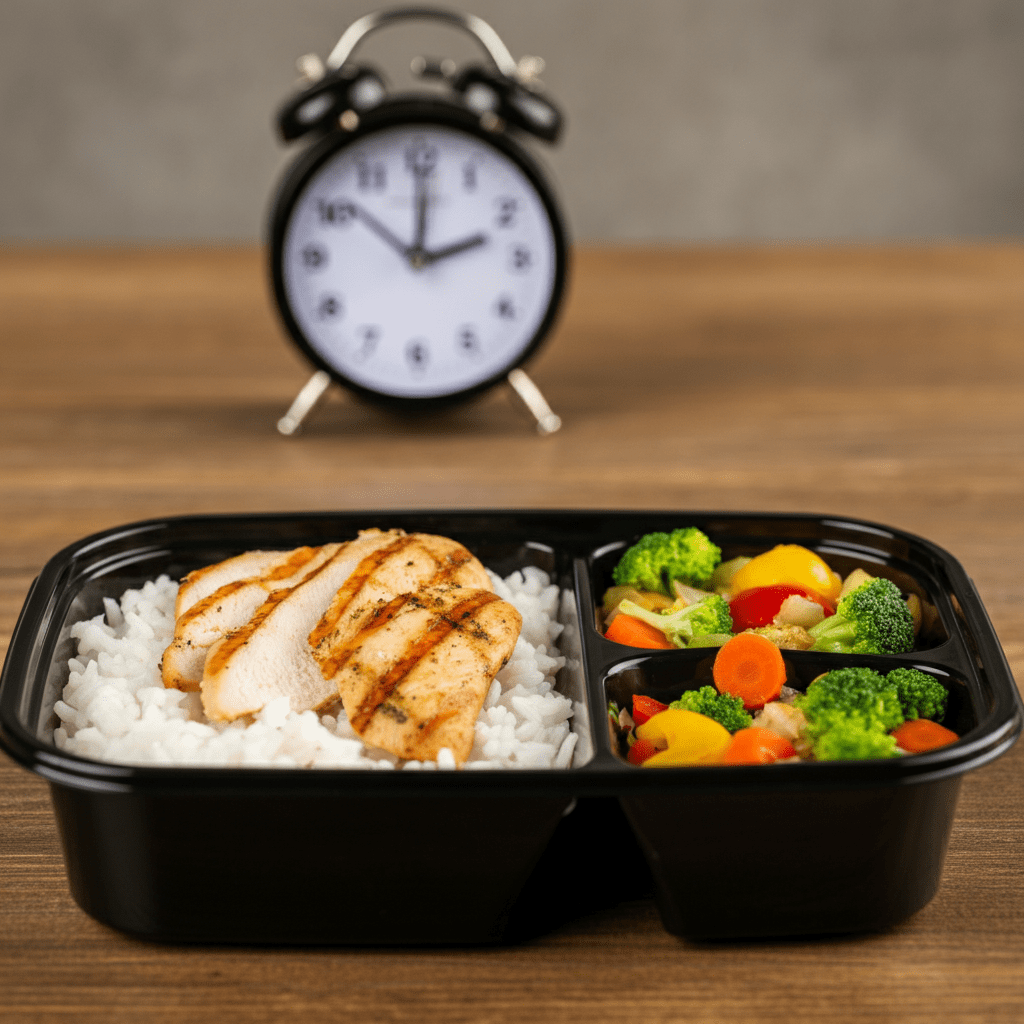
Tips for Meal Timing
Pre shift Fuel: Start with right diet of protein and complex carbohydrates so that you go through the shift.
Smart Snacking at the Workplace: Stuff snack foodstuffs that you can carry along with you like fruits, boiled eggs, protein bars or a variety of nuts.
Post-exercises Body Recovery: Add lean source of protein and a high-glycogen-burning carb to replenish the glycogen levels, which aid body and muscle recovery.
SMP Sample Shift Worker Plan:
Pre-Work: Nothing, except soft oatmeal with berries and peanut butter.
Mid shift Snack: Beef jerky or protein smoothie.
Post-Shift: Grilled turkey burger, wholegrain bun and diversion salad.
Androgenic Cooking Methods
Certain cooking techniques can help preserve nutrients important for hormone health.
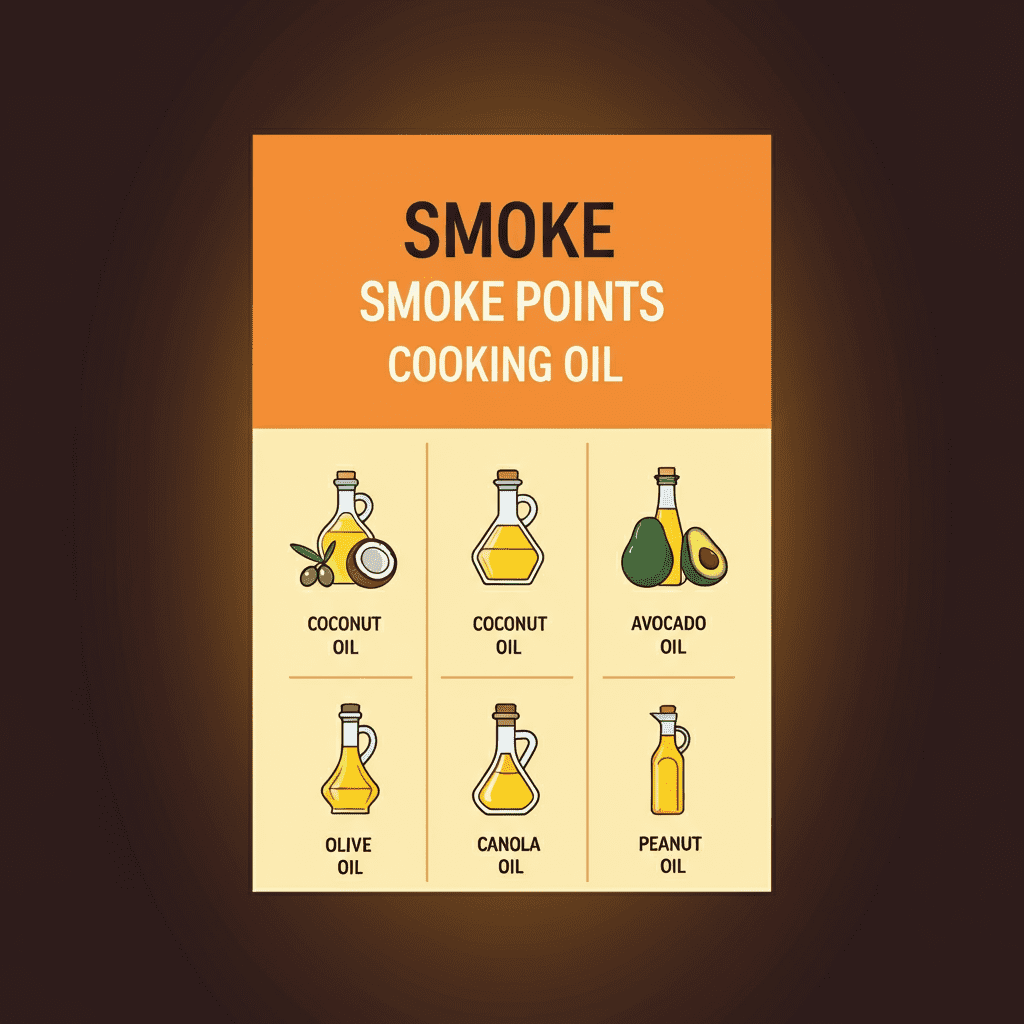
Best Cooking Methods
- Grilling or broiling preserves zinc and vitamins while adding flavor.
- Steaming minimizes nutrient loss in vegetables like broccoli and kale.
- Using Healthy Oils (e.g., olive oil and avocado oil) ensures that fats contribute to testosterone production without adding harmful trans fats.
Avoid These
High-heat methods like deep frying can cause oil to reach its smoke point, generating harmful compounds that impair testosterone.
Zinc-Rich Snacks for Muscle Growth
Snacks loaded with zinc make a great addition to a muscle-building diet.
Quick Zinc-Packed Options
- Roasted pumpkin seeds
- Tuna or canned sardines on whole-grain crackers
- Dark chocolate (70% cocoa or higher)
- Almonds or cashews
Cooking Oil Smoke Points
Cooking oils differ in how they respond to heat, and choosing the right oil is critical for preserving nutrients.
Best Oils for High-Heat Cooking
- Avocado oil (smoke point ~520°F)
- Ghee or clarified butter (~485°F)
- Canola oil (~400°F)
Oils for Low-Heat Cooking
- Extra virgin olive oil (~375°F)
- Flaxseed oil (avoid heating; great for salads)
People Also Ask (PAA)
- Is it possible to build muscle with 3,000 calorie diet?
Ans: Yes, even like 3,000 calories can be utilized to build muscle mass as long as you are doing strength training and a good macro ratio. - Which are the food items that help to increase testosterone?
Ans: Testosterone production can be encouraged by the use of such foods as eggs, oysters, fatty fish, and broccoli. - What is the influence of alcohol on testosterone?
Ans: High alcohol lowers the testosterone level and hinders the process of protein synthesis causing muscle recovery to be very slow. - What is the best food shift workers should have in the late night?
Ans: The best late night snack consists of protein and easily processed carbohydrates; e.g. grilled chicken and rice or yogurt with honey and granola. - Which oil is good to cook to increase testosterone?
Ans: Avocado oil and extra virgin olive oil are very good because of their health fats composition and the fact that they help to retain nutrients in their cooking process. - What makes zinc muscle building?
Ans: Zinc boosts the hormone production of testosterone, promotes recovery, and helps in the process of protein synthesis, which are important in muscle growth.
Conclusion
To build muscles, you do not need to make the process overwhelming when designing a 3,000-calorie muscle-building meal plan. Taking in the 40/30/30 macro split, adding up testosterone-boosting foods into the diet, and making good use of smart timing of a meal will stimulate muscle production and straighten out the recuperation procedure. Making sure that grocery shopping includes the right cooking options or the snacks containing zinc does not seem like much but matters a lot.
With the help of the consistency of your meal plan and following your progress, you may make corrections to make sure you are on track to meet your nutrition and fitness objectives. The thing is that muscle building is a slow process and it cannot be done quickly. Supplement this well-put meal plan with good exercise regime, hydration and good sleep to get the best out of it. Gradually, such work will both produce a visibly increase in strength, faster recovery, and a healthier, stronger body.
You start creating your all-time muscle-fueling meal structure right now–your gains are coming! Have questions? And we will take care of it start you off in case you drop them below.
M. Saim Akhtar
Certified Health Content Specialist at HealthBoostMax. INFS-qualified nutrition researcher with 5+ years of evidence-based health writing. Focus areas: health wellness Information, preventive medicine, nutritional biochemistry, and fitness science.
Fitness & Exercise
Unlock the Benefits of Lemon Water for Health in daily-life (2025)

Table of Contents
The lemon water has gained popularity because of the benefit of lemon water as a drink. It is claimed that it helps lose weight, improve digestion, and is a simple and routine wellness practice that has an enormous reward. But is it what it is cracked up to be? This guide takes a headlong plunge into everything you should know about lemon water.
At what time of the day the beverage is most beneficial to take and when most harmful to take, the goodness (and the hogwash) of the drink, the right way to make and refiner preparations, those people that should not have the drink and creative consumption styles. It is one of the most asked questions, how can lemon make my alkaline? Is it vitamin C? Can it be helpful to a liver detox? Discover this in this compound analysis.
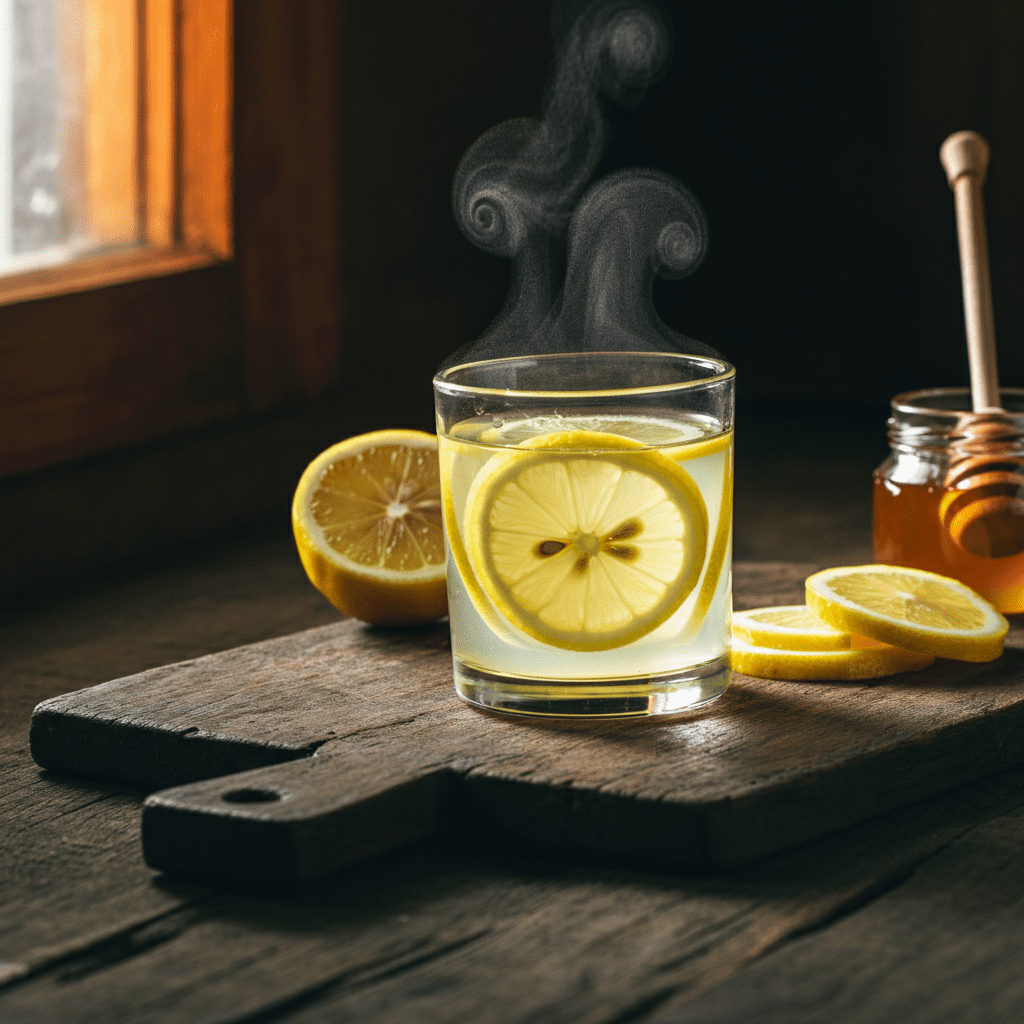
Best Time to Drink Lemon Water (Morning vs. Night)
Morning Energy Booster
Drinking lemon water in the morning on an empty stomach can kickstart your hydration and digestion. The vitamin C in lemons helps improve your immunity, while the warm water stimulates a gentle wake-up for your digestive system. Some believe lemon water in the morning alkalizes the body, although this is scientifically debated.
Benefits of Morning Lemon Water:
- Promotes hydration after hours of sleep.
- Supports metabolic processes, giving a slight energy boost.
- Enhances digestion by increasing stomach acid production.
Nighttime Comfort
Sipping on lemon water before bed may help calm your system, especially when paired with warm water. However, consuming acidic drinks too close to lying down may not suit those with acid reflux issues.
Considerations for Night Lemon Water:
- Helps with mild detox support during sleep.
- Encourages a sense of relaxation when served as a warm beverage.
- Could irritate individuals prone to heartburn if consumed too late.
Verdict
While both morning and nighttime offer unique benefits, the former is generally more beneficial for most people. Experiment to see what works best for your body and dietary needs.
Weight Loss & Digestion Benefits: Myths vs. Facts
Lemon water is often associated with weight loss, improved digestion, and overall gut health, but what does science really say?
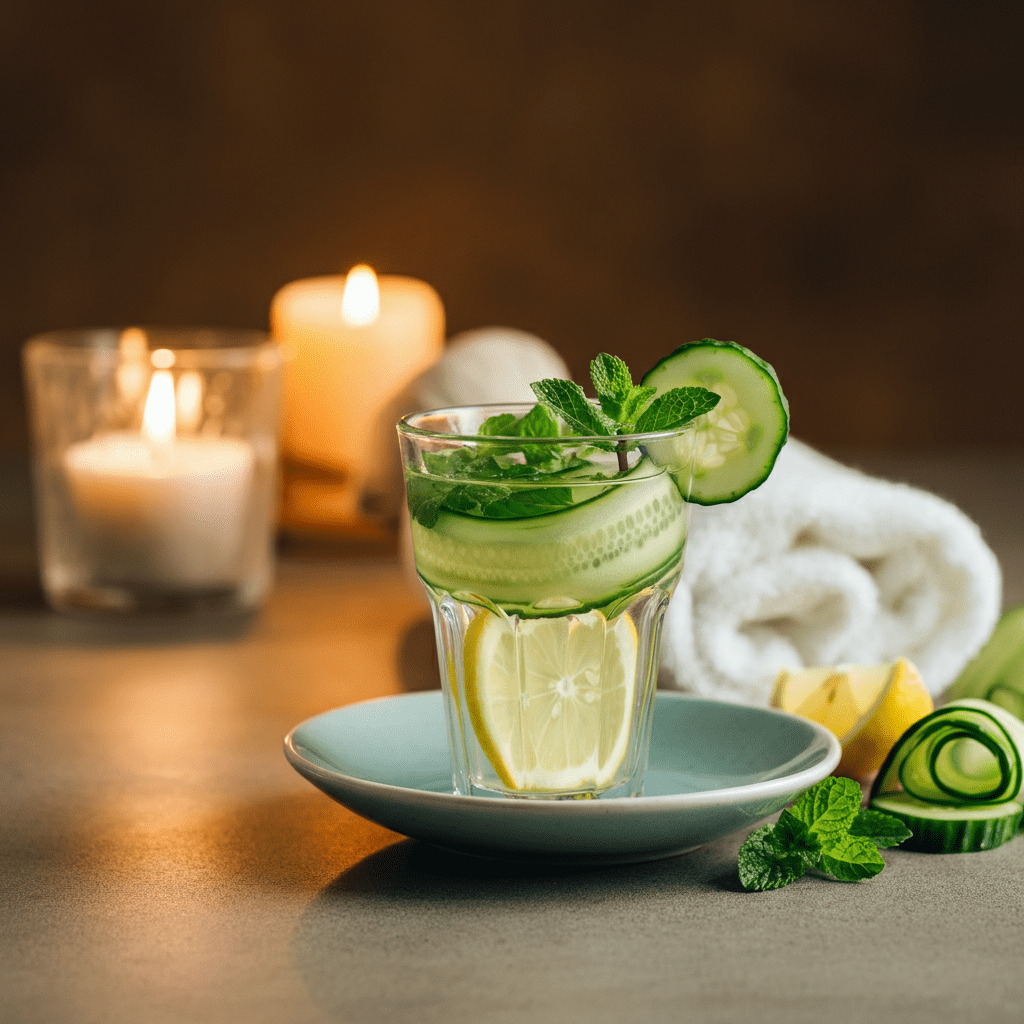
Weight Loss Claims
One of the most popular claims is that lemon water helps shed pounds by boosting metabolism. While there’s no direct evidence proving lemons as a fat-burning superfood, lemon water can support weight loss indirectly:
- Staying hydrated can aid appetite control, reducing overeating.
- Replacing sugary beverages with lemon water cuts calorie intake.
- Drinking lemon water may encourage a sense of fullness when consumed before meals.
Myth: Lemon water melts fat.
Fact: Lemon water is a low-calorie, hydrating alternative that supports overall weight loss as part of a healthy lifestyle.
Digestive Benefits
Lemon water is thought to stimulate the production of digestive enzymes in the stomach. The citric acid from lemons helps break down food more efficiently.
Digestive Benefits:
- Reduces bloating for some individuals.
- Supports bowel regularity by aiding hydration.
- Creates a mild detoxifying effect by stimulating liver function.
However, claims that lemon water “detoxes” the liver lack strong scientific backing. Instead, think of it as a complementary support to your body’s natural detox processes.
How to Prepare Lemon Water (Temperature & Quantity)
Optimal Temperature
Deciding whether to drink lemon water warm, cold, or at room temperature depends on personal preference and your goals:
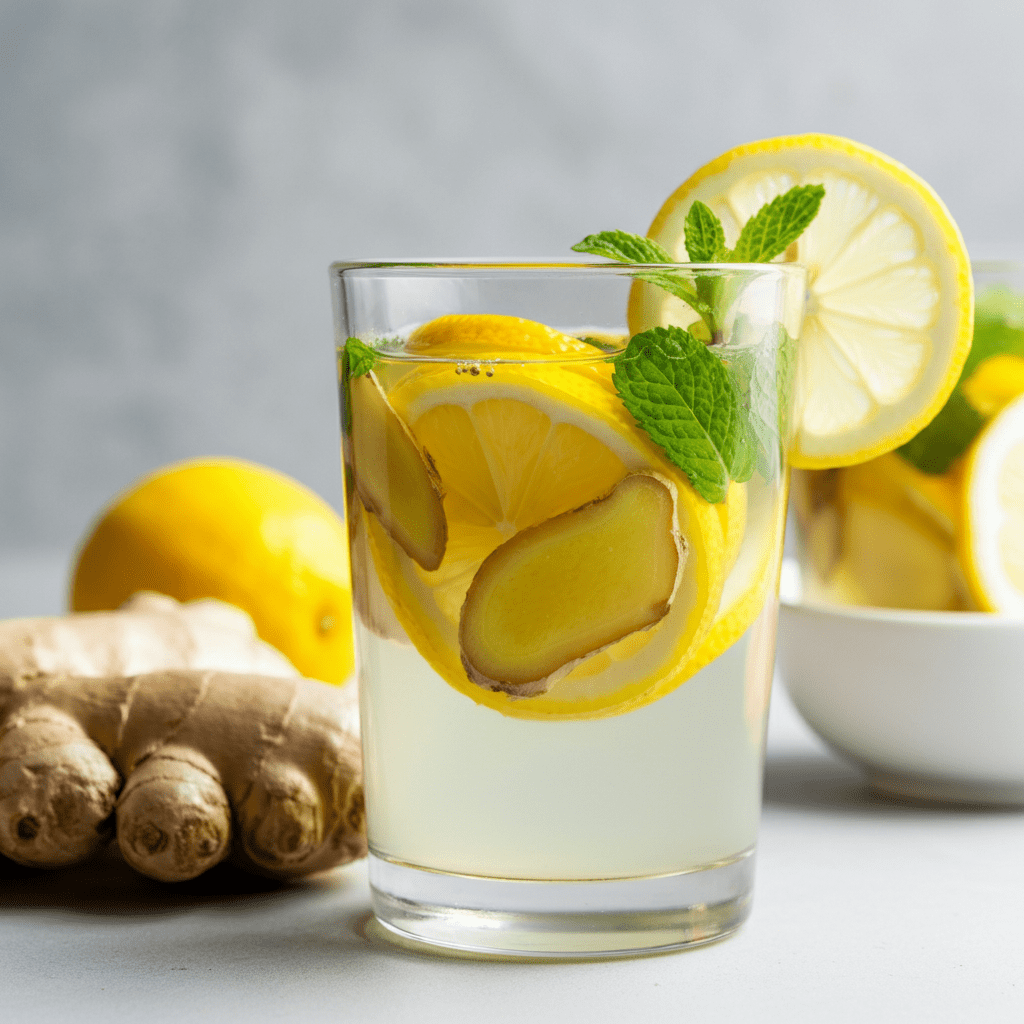
- Warm Water – Best for digestion, particularly in the morning, as it gently activates the digestive system.
- Cold Water – Refreshing and more thirst-quenching during hot weather, though less favorable for digestion.
How Much Lemon to Use
A general guideline is the juice of half a medium-sized lemon in about 8-12 ounces of water. Starting with a lower concentration is advised for those new to lemon water, as the acidity can be harsh on the stomach.
Preparation Tips:
Squeeze fresh lemon juice, avoiding pre-packaged options with preservatives. Add slices of lemon for presentation and extra flavor. Use a straw to minimize contact with your teeth and prevent enamel erosion.
Who Should Avoid Lemon Water?
While lemon water is generally safe, certain groups may need to exercise caution:
Acid Reflux Sufferers
Citrus fruits, including lemons, can trigger or worsen acid reflux symptoms by increasing the acidity in the esophagus.
Dental Health Concerns
The high acidity in lemons can erode tooth enamel over time, leading to sensitivity and decay. To prevent this:
- Always dilute lemon juice with water.
- Rinse your mouth with plain water after drinking lemon water.
- Avoid brushing teeth immediately after consuming acidic drinks.
Tips to Minimize Risks:
- Keep your lemon water intake to 1-2 servings per day.
- Use warm water and a lower lemon concentration when starting out.
Creative Variations to Try
Lemon water doesn’t have to be boring! Add a creative twist to enhance both flavor and potential health benefits.
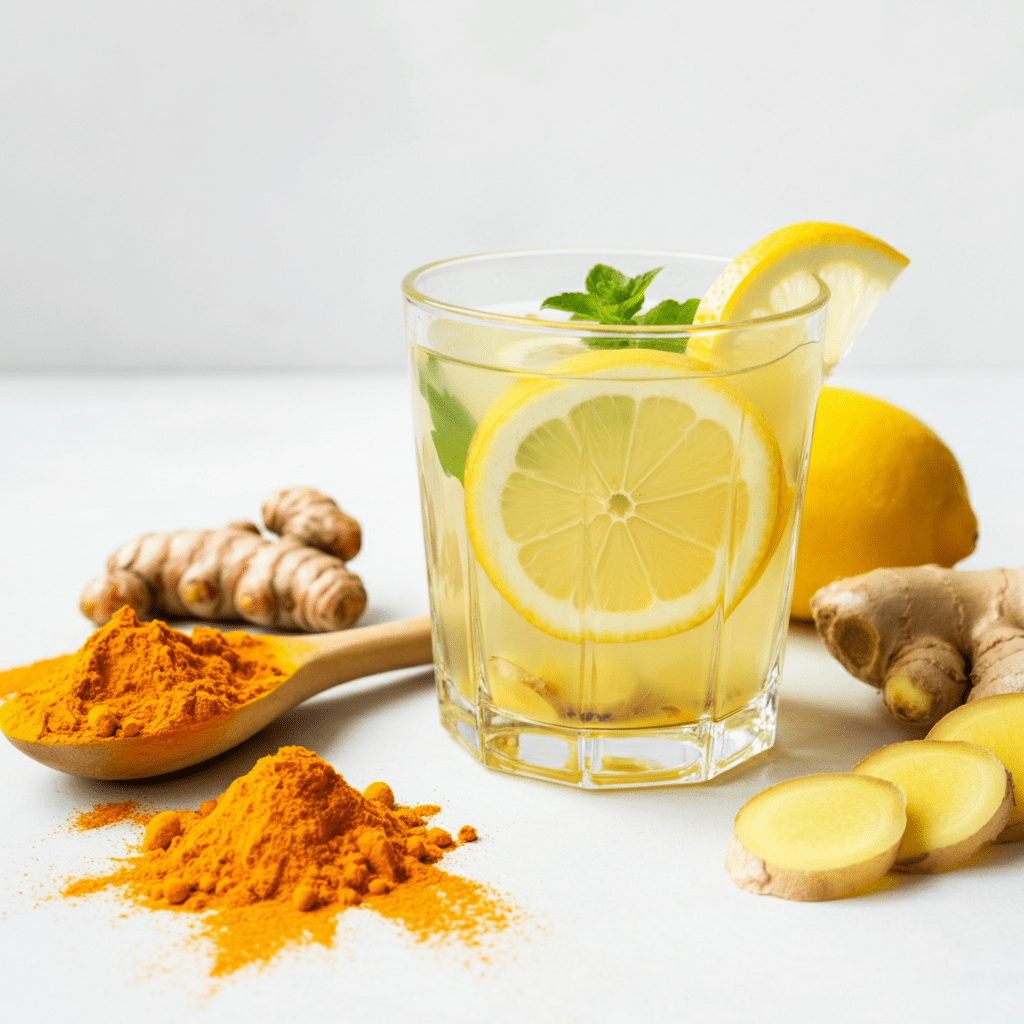
1. Ginger Lemon Water
Add a slice or two of fresh ginger for anti-inflammatory benefits and a warming kick that soothes digestion.
2. Mint Lemon Water
Mix in fresh mint leaves for a cooling, refreshing flavor. Mint also aids digestion and fights bloating.
3. Turmeric Lemon Tonic
A pinch of turmeric pairs well with lemon’s tang, offering powerful antioxidant and anti-inflammatory properties.
4. Cucumber-Lemon Water
Add cucumber slices for a hydrating, spa-inspired touch. It’s especially refreshing in summer months.
5. Lemon Electrolyte Balance
For post-workout recovery, sprinkle a pinch of sea salt or add coconut water for natural electrolytes.
Each variation elevates your lemon water experience, tailoring it to your tastes or specific health goals.
FAQ
- When is the most appropriate time to drink lemon water?
When to take lemon water mainly depends on what you want to achieve. It increases hydration, aids digestion and provides an energy burst because of the vitamin C it contains when consumed in the morning on an empty stomach. Warm water with lemon may be relaxing and offer some detoxification at night, however; warm water and lemon are not ideal in case of acid reflux-related symptoms. - Is lemon water effective in weight loss?
It is true that lemon water is not a miracle weight-loss product, but it can indirectly help in weight loss. Hydration is an excellent appetite suppressor, and the intake of unhealthy beverages need not be replaced by something significantly less healthy, such as lemon water, which will allow lowering calories. Taking it prior to the food can increase satiety thereby minimizing the consumption of excessive food. - What is the best way of preparing lemon water?
To get the best of it, squeeze half a medium-sized lemon in 8-12 Oz of water. Cold water refreshes in the day time and warm water, preferably in the morning, aids digestion. Dissolve your tooth enamel in acidity using a straw. - To whom are lemon waters contraindicated?
Lemon water can also be avoided or consumed less in people who have acid reflux or tender teeth. It has acidity that may worsen heartburn and give enamel tooth decay. So as to make it less risky, add water to the lemon juice, use a straw and then swish plain water in the mouth as you end the practice. - Is lemon water good to detox the body?
Lemon water has hydrating qualities and it can therefore facilitate natural detox, by helping to stimulate digestion, and the liver, but lemon water does not detox the body directly. Liver and kidneys take the work of detoxification, and lemon water is just an adjuvant. - How can lemon water be improved creatively?
Yes! What flavor and benefits to boost? Adding such ingredients as ginger to soothe the digestive tract, mint to give it a tinge of freshness, turmeric to provide anti-inflammatory protection, or cucumber to add a hydrating touch. It is also possible to sprinkle a pinch of sea salt to balance the electrolytes particularly after sport.
Final Thoughts
Its regular hydration, instant vitamin C, and minimal stomach upset assistance are all possible with the easy habit of drinking lemon water. And although it is not some miracle medicine of losing weight or cleansing your body, it is an excellent substitute to sugary drinks and a contributor to overall wellness. Don t forget to eat it in moderation and take precautions concerning the health of your teeth.
Test it in the mornings as well as evenings and experiment with some creative incarnations such as ginger or mint to find your perfect brew. Begin with a small portion, be an open-minded party to your body, and make this fresh, flexible drink your part of a wellness journey!
M. Saim Akhtar
Certified Health Content Specialist at HealthBoostMax. INFS-qualified nutrition researcher with 5+ years of evidence-based health writing. Focus areas: health wellness Information, preventive medicine, nutritional biochemistry, and fitness science.
Fitness & Exercise
Best Time to Drink Green Tea for Weight Loss
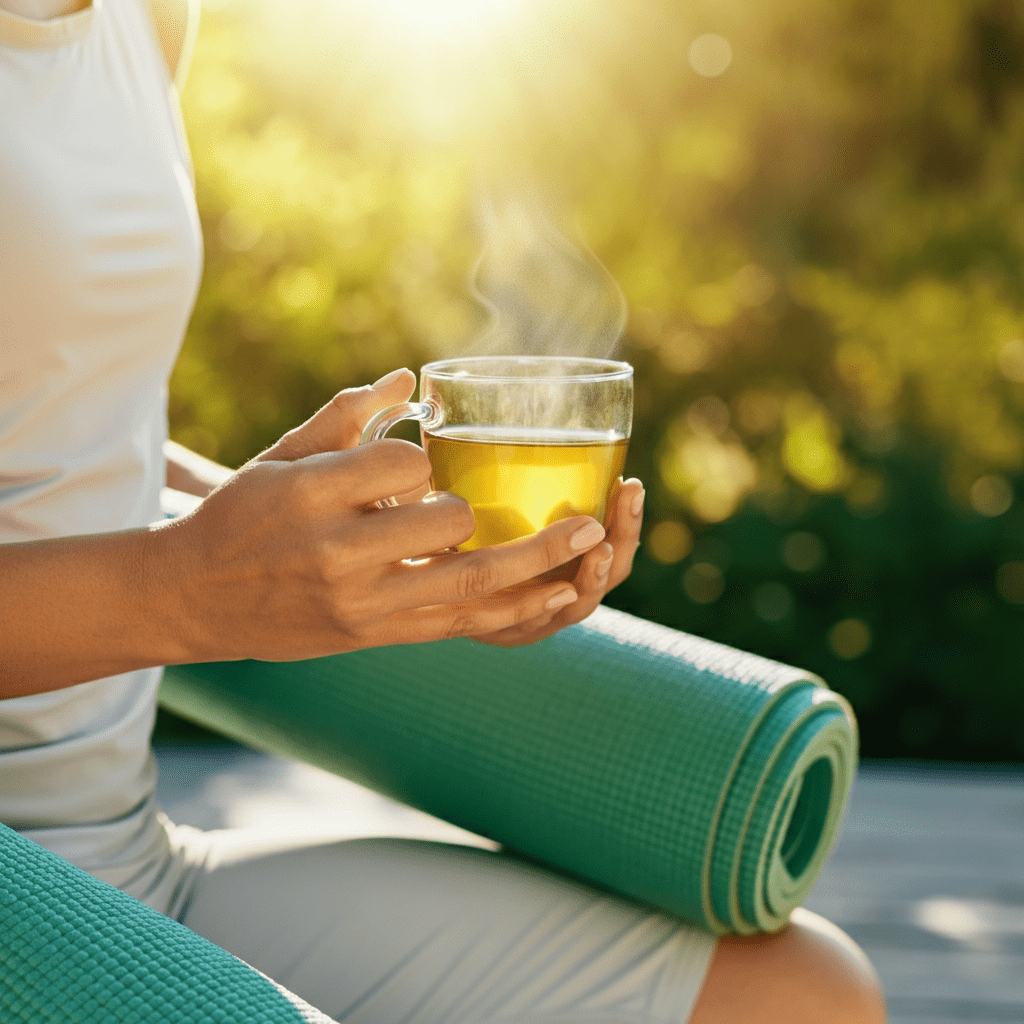
Green tea has been renowned in having unbelievable health advantages and among the top list has been its effective property of contributing to weight loss. This ancient drink, rich in antioxidants, such as EGCG, and metabolism-increasing compounds, can be used to support the process of burning fat as the most effective strategy. However, is it a question of time? Is it better taken in the morning, before exercising or when fasting? And which one is better matcha or sencha?
This book gives a break down of the science based advice on how to time your green tea drinking pattern to lose weight, when not to have caffeine crashes and even how to get the best brands to help you lose weight. Also, you will get to know some secret secrets on how to make your tea in order to get its maximum fat burning effect. You are about to discover the real power of green tea in weight loss sustainably!
Does Timing Matter? Morning vs. Pre-Workout Green Tea
When you drink green tea plays a significant role in how effectively it supports your weight loss efforts.
Drinking Green Tea in the Morning
Having green tea in the morning will make your metabolism start and prepare your body to begin burning the fat. Green tea has a lot of catechins like the EGCG (epigallocatechin gallate) that stimulates the thermogenesis i.e. getting your body warmer as it burns calories. It can be maximized when combined with a light and protein rich breakfast.

Benefits:
- Boosts metabolism for the rest of the day.
- Provides a mild caffeine kick to enhance focus without the jitters of coffee.
- Promotes better digestion.
Pre-Workout Green Tea for Weight Loss
Drinking green tea 30-45 minutes before your workout can optimize fat oxidation during exercise. Its caffeine content gives you an energy boost, while the antioxidants help minimize muscle inflammation and improve endurance.
Benefits:
- Enhances fat burning during exercise.
- Boosts stamina and performance.
- Acts as a natural pre-workout drink without additives.
Pro Tip: Combine green tea with lemon for an extra dose of Vitamin C, which makes it easier for your body to absorb the tea’s antioxidants!
Matcha vs. Sencha: Which Is Better for Weight Loss?
Matcha
Matcha is a powdered green tea made from entire tea leaves, giving it a concentrated amount of antioxidants and caffeine. Its unique preparation method makes matcha a powerful ally for weight loss.
Advantages:
- Higher EGCG levels compared to other green teas.
- Sustained energy boost without a crash.
- Can serve as a coffee alternative.
Sencha
Sencha, Japan’s most popular loose-leaf green tea, is less concentrated than matcha but still offers high levels of L-theanine and catechins, perfect for daily consumption.
Advantages:
- Milder flavor and lower caffeine content.
- Suitable for those sensitive to caffeine.
- Easy to brew and enjoy for multiple cups throughout the day.
Verdict: If you’re looking for maximum fat-burning benefits, matcha is the better option. However, sencha is an excellent choice for a lighter daily drink.

Optimal Brewing Temperatures & Avoiding Caffeine Crashes
How to Brew Green Tea for Maximum Benefits
Brewing green tea correctly ensures you retain its fat-burning properties while minimizing bitterness.
Optimal Brewing Tips:
- Water temperature should be between 160°F and 185°F.
- Steep for 2-3 minutes; over-steeping increases bitterness.
- Use 1 teaspoon of leaves (or 1 matcha scoop) per cup.
Avoiding Caffeine Crashes
The L-theanine in the green tea guids a slow but sure energy spur that offsets the quickening yet indulges of the caffeine. To continue the reduction of the caffeine sensitivity, try sencha or bancha (which is a low-caffeine green tea). Finally, to avoid late-day crashes, reduce its intake to 2-3 cups and do not take it too near bedtime.
Green Tea and Intermittent Fasting
Combining green tea with intermittent fasting can supercharge your weight loss efforts. Green tea suppresses appetite while promoting fat burning, making it an ideal beverage for your fasting window.
How It Helps During Fasting:
- EGCG and caffeine work together to increase fat oxidation.
- Helps keep hunger cravings at bay.
- Improves focus and mental clarity during fasting hours.
For the best results, drink green tea during your fasting window with a squeeze of lemon or ginger to amplify its effects.
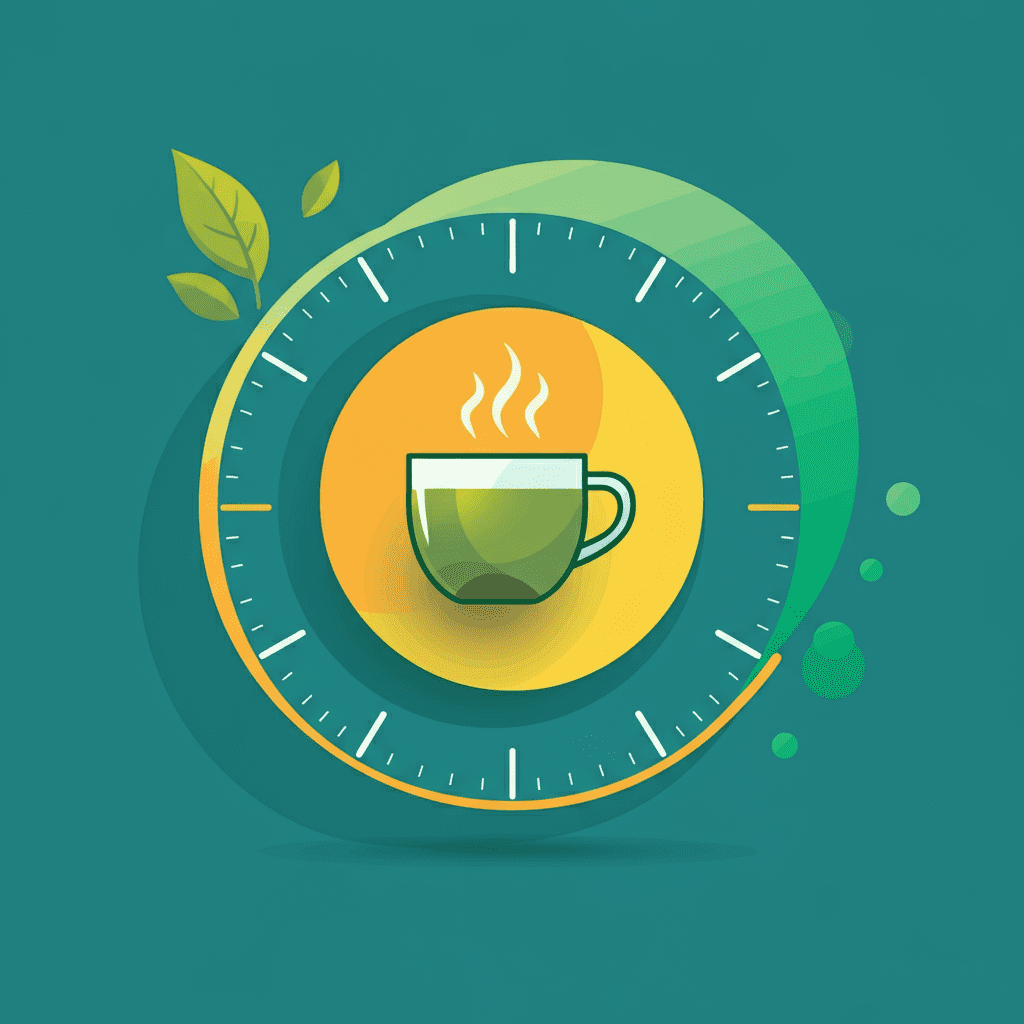
EGCG Benefits for Fat Loss
The most prominent compound in green tea is EGCG (epigallocatechin gallate)- this compound is responsible with most of the weight loss effects of green tea. This antioxidant not only enhances the metabolism but also affects the fat storage and thermogenesis.
Key Benefits:
- Fat Breakdown: EGCG aids in breaking down stored fat in fat cells.
- Enhanced Caloric Burn: Stimulates thermogenesis, which can burn 70-100 extra calories per day.
How to Maximize EGCG Intake
- Choose high-quality loose-leaf tea or matcha for maximum concentration.
- Pair with meals high in healthy fats for better absorption of antioxidants.
Can Green Tea Replace Coffee?
If your goal is weight loss, switching from coffee to green tea can be a game-changer. While coffee also contains caffeine, green tea’s L-theanine content ensures a balanced energy boost without jitters or crashes.
Benefits of Replacing Coffee with Green Tea:
- Lower acidic content, making it gentler on the stomach.
- Contains fewer calories if consumed without milk or sugar.
- Provides additional weight loss benefits through EGCG.
Best Green Tea Brands for Weight Loss
Here are some top-rated green tea brands to support your weight loss goals:
- Matcha Konomi Akira Organic: Premium matcha powder with high EGCG levels.
- Jade Leaf Organic Matcha: Ideal for beginners looking for authentic matcha.
- Harney & Sons Japanese Sencha: A flavorful loose-leaf tea packed with antioxidants.
- Yogi Green Tea Blueberry Slim Life: Infused with Garcinia Cambogia for added weight management support.
- Numi Organic Gunpowder Green Tea: A robust, smoky flavor with excellent health benefits.
Why Green Tea is a Weight-Loss Champion
Green tea has peculiar mixture of catechins and caffeine in contrast to the other drinks. They are natural compounds that have a synergistic effect that stimulates your metabolism so that your body burns fat more healthily. To this is added its appetite-suppressing abilities and here green tea will be a good companion to have when wanting to shed some pounds.
The best thing about green tea is that it is an accompaniment to any healthy living. In contrast to strenuous diet products or programs that are unsustainable, green tea is easy, natural and has myriad styles: a nice experience that you can appreciate daily.

The Science of Timing
While sipping green tea at any time can be beneficial, drinking it at the right moments maximizes its impact on your weight loss goals. The best times to drink green tea for weight loss include:
- Morning Kickstart: Drinking green tea before breakfast helps stimulate your metabolism, setting the tone for a productive day. It’s a lighter alternative to coffee while still offering a mild jolt of energy.
- Before a Workout: Green tea is an excellent pre-exercise drink, as it boosts your fat-burning capabilities during physical activity. Its caffeine content enhances focus, giving you a better performance edge.
- Mid-Afternoon Pick-Me-Up: Instead of reaching for sugary snacks, have a cup of green tea to ward off cravings. It stabilizes blood sugar levels while curbing hunger, keeping your calorie intake in check.
- Evening Relaxation: Opt for decaffeinated green tea after dinner to improve digestion, which aids in better nutrient absorption and metabolism efficiency while you sleep.
Making it Work for You
The key is consistency. Green tea’s benefits accumulate over time, meaning you’ll see the best results if you make it a regular part of your routine. Pair it with balanced meals and an active lifestyle, and you’ll be amazed at how even small changes can lead to significant results.
People Also Ask (PAA)
1. Is green tea effective for weight loss?
Yes, green tea contains EGCG and caffeine, which boost metabolism, enhance fat oxidation, and promote calorie burning.
2. Can I drink green tea on an empty stomach?
While drinking green tea on an empty stomach is safe for most, some may experience nausea. Pair it with light food if you’re sensitive.
3. How many cups of green tea should I drink daily for weight loss?
2-3 cups of green tea per day is ideal for weight loss, providing sufficient antioxidants without overloading your system with caffeine.
4. What’s better for weight loss—matcha or regular green tea?
Matcha has higher antioxidant levels and thus offers more weight loss benefits than regular green tea.
5. Can green tea help with bloating?
Yes, its diuretic properties can reduce water retention and ease bloating.
6. Should I add honey or sugar to green tea for weight loss?
It’s best to drink green tea plain to avoid additional calories—but if needed, consider a small amount of honey.
Conclusion
Drinking green tea may also help a great deal in shedding off weight notably when undertaken in a tactical way. Green tea in the morning or prior to the pre-workout Session raises the metabolism and the caloric expenditure, and it is your choice whether to go to matcha or sencha. Green tea and intermittent fasting should be combined, and you should learn about the EGCG effects of green tea and the way of brewing it to ensure that you will obtain the maximum out of it.
Include green tea as a part of your daily routine and watch your weight drop to the sky! Gaze at gourmet green tea and watch what this forgotten beverage of the ancient ages can do to alter your health and fitness resolutions.
Take your first step today—brew a fresh cup of green tea and unlock its benefits!
M. Saim Akhtar
Certified Health Content Specialist at HealthBoostMax. INFS-qualified nutrition researcher with 5+ years of evidence-based health writing. Focus areas: health wellness Information, preventive medicine, nutritional biochemistry, and fitness science.
Healthy Lifestyle & Nutrition
Top Superfoods for Energy in 2025 – Boost Your Vitality
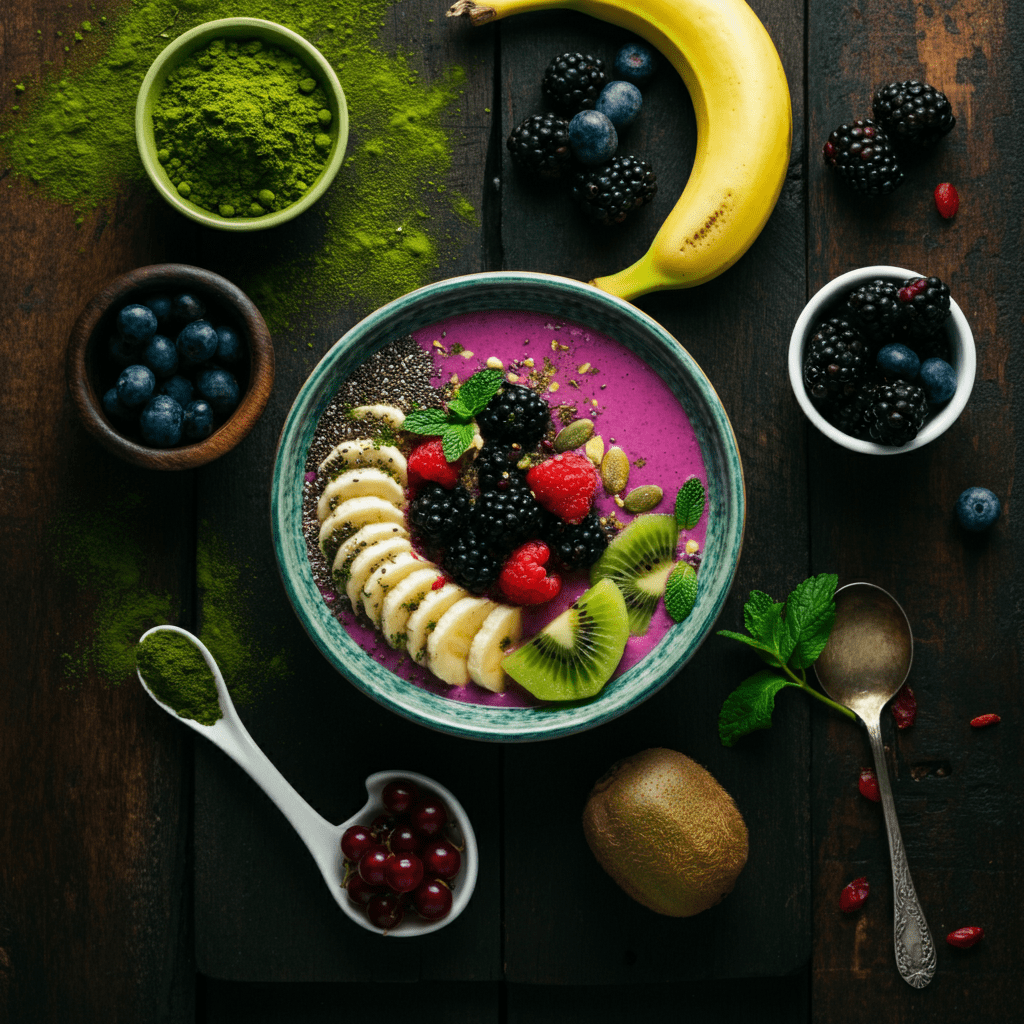
Table of Contents
The journey of long-lasting energy and vitality in 2025 is being redefined with the force of superfoods. Nowadays, new solutions such as moringa, adaptogenic mushrooms, and other fatigue-inhibiting foods are becoming the stars of the show, which are able to improve cellular energy on a fundamental level. Both scientists and nutritionists are discovering how these natural power houses maximize the power of the mitochondria, or the last word in biohacking to beat fatigue and boost metabolic performance.
What is more exciting? It is not only health gurus that can eat these super foods, but also their access to more affordable foods. So, anybody can reap the benefits of having them in their everyday lives. Whether it comes to the afternoon drag or maximum performance, a precisely selected diet of energy boosting food can do miracles. The list can go on with any fast dessert, tasty smoothies, etc. Now it is time to feel brand new energy and well-being one bite, one sip, and one sprinkling at a time.
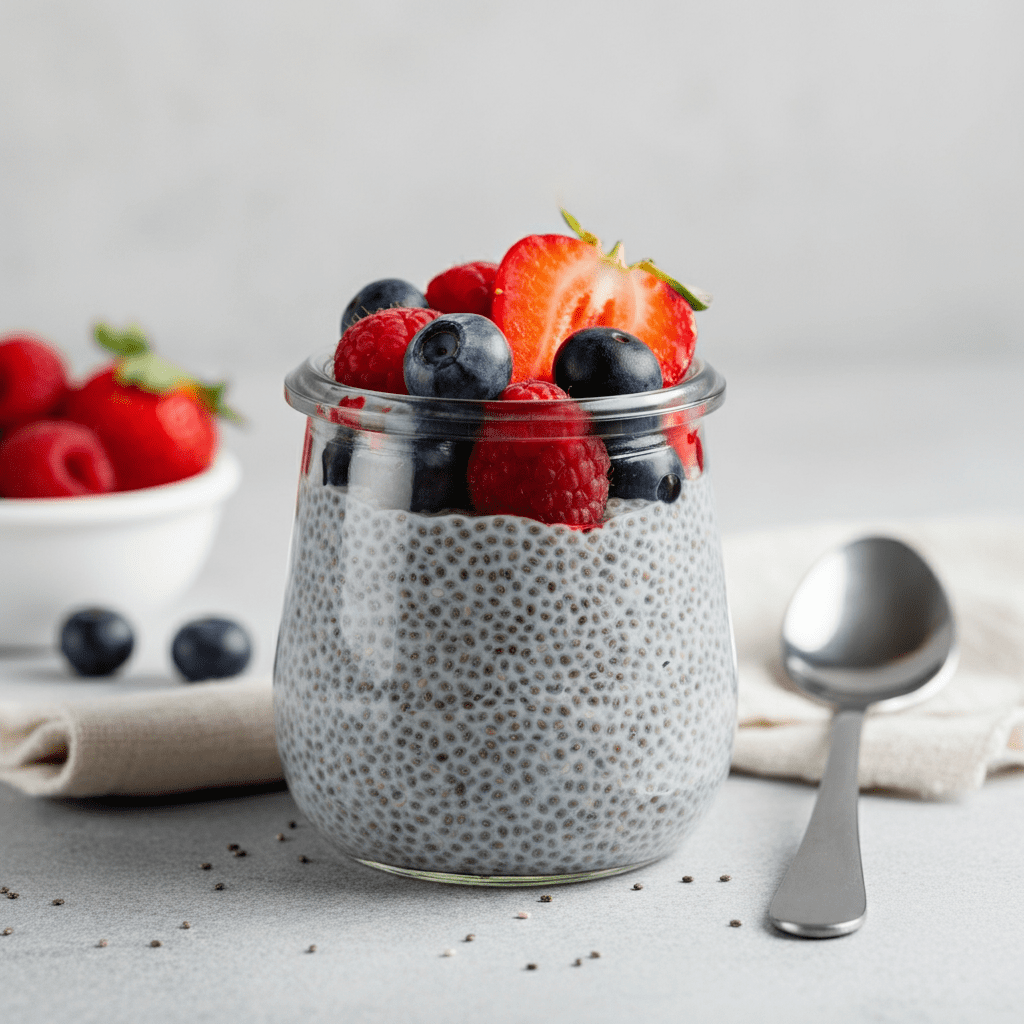
Superfoods of energy 2025
The superfood arena is dynamic and ready to discover new means of enhancing vitality and health. Going to 2025, there are new options that are entering the mainstream, such as moringa, adaptogen mushrooms, and other technologies, because of their potent effects, especially in biohacking and cellular energy.
Moringa – The nutriment rich force
Referred to as the wonder tree, moringa contains a high level of vitamins, minerals, and amino acids, which drive your body at the cellular level. It is an effective anti-inflammatory agent which promotes the normal functioning of cells and its iron and magnesium components fight fatigue. Moringa optimizes the efficiency of mitochondrial functions, and this improves the generation of energy hence popular among diets that fight fatigue.
Adaptogenic mushrooms – The natural stress and energy balancer
Such adaptogenic mushrooms as cordyceps and reishi are rich in bio-compounds that lessen the tension and increase stamina. Specifically, the Cordyceps is heralded as increasing cellular oxygen uptake, enhancing mitochondria’s energy production. Making the nervous system relax and stimulating long-term energy in gentle ways at once, Reiki is an ideal choice when considering metabolic efficiency.
Other up and coming energy bright stars.
Ashwagandha Ashwagandha greens, sea fennel and spirulina clusters are re-establishing our notion of nutrition. The nutrient-dense foods are rich in antioxidants and adaptogens, which protect the cells against oxidative stress and boost energy routes.
Such superfoods are both fashionable and scientifically proven, widely available, and versatile. Your well-being and health may have a palpable change when you add them to the habitual day schedule and ensure you feel more energetic and alive.
Cheap And Available Superfoods As Daily Energy Food
There are no reasons to drain the bank account to feel enthusiastic on a daily basis. Most superfoods that are inexpensive are long-haul energy sources that offer metabolism efficiency. Chia seeds and bananas, or oats are not only available, but also filled with all the nutrients required to combat fatigue successfully.
Chia Seeds- Miniature Big Things
Chia seeds are a nutritionally rich staple, with some incredible fiber, protein, and omega-3 fatty acid proportion. This combination of ingredients ensures the normalizing of blood sugar levels and long-lasting energy. Compared to other emerging superfoods, chia seeds are an affordable choice that does not require the added cost to maintain its energy-lifting capacity.
Bananas- The Portable Powerhouse
Bananas are natural super food against fatigue, the foods also contain carbohydrates, which are quick sources of energy, potassium, and vitamin B6, which are more sources of energy. They are a convenient snack to have especially on a busy day and provide a quick energy boost. Bananas are a good, affordable, and reliable option, even though they do not have the latest and greatest superfoods.
Oats- The Energy Giver
The traditional breakfast and one of the most top-notch budget kinds of metabolic efficiency sources are oats. These are very high in fiber and complex carbs guaranteeing long-acting energy release in the morning, which is excellent to get through the day.
How they are similar to new superfoods
Although some of its newer superfoods, moringa and adaptogenic mushrooms, are also bound to confer promising new mitochondrial effects, cost effective staples such as chia seeds and oats are likely to confer more consistent energy, costing a mere fraction of the price. They are everywhere and easy to fit into any diet thus proving that you do not have to exorbitantly spend on them in order to supply energy requirements.
Spicy and stingy, these energy giving foods are set to energize your day!

Energizing Recipes And Smoothies With Superfoods
The superfood arena is dynamic and ready to discover new means of enhancing vitality and health. Going to 2025, there are new options that are entering the mainstream, such as moringa, adaptogen mushrooms, and other technologies, because of their potent effects, especially in biohacking and cellular energy.
1. Moringa-The nutriment rich force
Ingredients:
- 1 teaspoon moringa powder
- 1 frozen banana
- 1 cup spinach
- 1 cup almond milk (or your choice of milk)
- 1 tablespoon almond butter
- 1 teaspoon honey (optional)
Instructions:
Blend all ingredients until smooth. Serve immediately.
Benefits: This smoothie is rich in iron, magnesium, and antioxidants from moringa and spinach, stimulating cellular energy and fighting fatigue effectively. The banana provides an instant boost with natural sugars and potassium.

2. Chia-Powered Energy Pudding
Ingredients:
- 3 tablespoons chia seeds
- 1 cup unsweetened coconut milk
- 1 tablespoon cacao powder (optional)
- 1 teaspoon maple syrup (optional)
- Fresh berries for topping
Instructions:
Mix chia seeds, coconut milk, and cacao powder in a jar. Stir well and refrigerate overnight. Top with fresh berries before eating.
Benefits: Packed with omega-3s, protein, and fiber, chia seeds stabilize blood sugar for sustained energy. The optional cacao adds a dose of magnesium to support metabolic efficiency.
3. Adaptogenic Mushroom Latte
Ingredients:
- 1 teaspoon adaptogenic mushroom powder (cordyceps or reishi preferred)
- 1 cup hot almond or oat milk
- 1 teaspoon honey
- ¼ teaspoon cinnamon (optional)
Instructions:
Whisk mushroom powder into the hot milk, then add honey and cinnamon. Stir well and enjoy warm.
Benefits: Cordyceps enhances oxygen utilization and energy production at the cellular level, while reishi provides calm, sustained vitality, making this an ideal energy booster for both mind and body.
These recipes combine flavorful ingredients with impressive nutrition profiles to help you combat fatigue and stay energized throughout your day. Try them out and feel the difference!

Superfoods vs traditional energy boosters
When it comes to fueling your day, both emerging superfoods like moringa and adaptogenic mushrooms and traditional energy boosters like coffee and energy drinks have their merits. Here’s how they stack up against each other in terms of energy, health benefits, and sustainability.
Energy impact
- Superfoods: Moringa and adaptogenic mushrooms provide steady, sustained energy by enhancing mitochondrial function and optimizing oxygen utilization. They work at a cellular level, promoting long-term energy.
- Traditional Boosters: Coffee and energy drinks offer a rapid energy spike due to caffeine and sugar, but often lead to crashes or dependency over time.
Health benefits
- Superfoods: Loaded with antioxidants, vitamins, and minerals, superfoods support overall health, reduce inflammation, and keep stress in check.
- Traditional Boosters: While caffeine can temporarily increase alertness, excessive consumption may contribute to sleep disturbances, anxiety, and dehydration.
Sustainability
- Superfoods: Sourced naturally and with minimal processing, superfoods are often eco-friendly. However, global demand can sometimes raise concerns about sourcing and availability.
- Traditional Boosters: Many energy drinks come with high environmental costs due to plastic packaging and intensive processing. Coffee’s sustainability depends heavily on farming practices.
The verdict
Superfoods offer a holistic, health-driven approach to energy, while traditional boosters provide a quick, temporary fix. Choosing the right option depends on your goals, but superfoods stand out for supporting long-term vitality with added health and ecological benefits.
FAQs Energy-Giving Superfoods
1.Which are the best new superfoods to energy in 2025?
Superfoods on the horizon will include moringa, adaptogenic mushrooms (including cordyceps and reishi) and ashwagandha greens. The foods are renowned to improve the action of the mitochondria, thereby, increasing cellular energy supply and fighting fatigue in a natural way.
2.What are ways in which superfoods improve mitochondrial activity?
Moringa, cordyceps and other superfoods help mitochondria to operate more efficiently due to key nutrients which include Antioxidants, iron, magnesium, and so on, allowing cells to reduce oxidative stress levels, resulting in the maximizer in energy production.
3.Do superfoods have cheap alternatives?
Yes! Superfoods such as chia seeds, bananas, and oats are cheap and easily available to everyone. They do not only provide nutrients that stabilize blood sugar, sustain energy, and enable metabolic efficiency but also do not push expenses to the limit.
4.What are the top recipes that contain superfoods to give energy?
Speedy recipes comprise of moringa green smoothie, chia-seed energy pudding and adaptogenic mushroom latte. All of them are mixed with crucial superfoods to increase energy levels, but at the same time they are tasty and simple in making.
5.Are superfoods as good as coffee in giving energy?
The energy boosting properties of products such as adaptogenic mushrooms offer slow, gradual energy via mitochondrial most excellent condition whereas coffee increases energy momentarily by virtue of caffeine presence, which is liable to a crash. There is an extra boost to nutrition and health with superfoods.
6.Are super foods able to combat fatigue?
Absolutely! To fight fatigue, foods that help to keep cellular energy stores healthy, minimize inflammation, and improve the functioning of your metabolism include moringa, spinach, and chia seeds, to sustain you with a steady energy level throughout the day.
Conclusion
The movement behind super-foods has been changing the concept of energy and vitality in 2025. Science-supported alternatives such as moringa, adaptogenic mushrooms, and chia seeds provide a long-term source of energy that supports cell functions, combats fatigue, and improve metabolic processes. The fact that these superfoods are even becoming more affordable and accessible is an added plus too and the fact that it is easy to work them in the everyday life.
Energetic whether shaking up a healthy smoothie or seeking a quick and energy boosting snack, these are a healthy, natural approach to being energized. It is time to take a step forward and move to permanent solutions such as caffeine and energy drinks and take a look at what in the long-run will be the use of superfoods.
Make the next move to a more lively life. Test these superfoods, explore and create some recipes, and you will feel their power in terms of increasing your vitality and general well-being. Training on your energy begins now
M. Saim Akhtar
Certified Health Content Specialist at HealthBoostMax. INFS-qualified nutrition researcher with 5+ years of evidence-based health writing. Focus areas: health wellness Information, preventive medicine, nutritional biochemistry, and fitness science.
Fitness & Exercise
Simple Exercises to Boost Flexibility with Arthritis

Table of Contents
Arthritis is a painful disease and when treated efficiently, it can help come through the pain. Some exercises that can be done at home are an effective response to the pain. The aim of doing this easy movement is to increase flexibility in the joints, flexibility and agility to ensure you could continue being normally active and healthful in a lifelong journey. These exercises are also applicable to relieve discomfort, and with regular work you can feel a significant increase in the quality of your life.
The trick with exercising with arthritis is to concentrate on low-impact exercises that would not cause extra stress on the affected joints. The choice of the exercises may contribute significantly to controlling the discomfort, but remaining active. This guide looks at different easy exercises on the arthritis that can be performed whether you are new to exercising or seeking certain movements that would help relieve pain.

Stretching Exercises
Stretching is straightforward and becomes an excellent approach to decreasing your rigidness and enhancing your variety in movements. Begin by the wrist stretch but doing a gentle stretch of the arm first by the extension of one arm in front, with the palm turned downward. With your other hand, slowly move your fingers back so that you get a slight stretch in your forearm. Between 15 and 20 seconds: alternate hands.
The next stretch that will be helpful is the neck tilt. Remain seated or stand erect and move your head slowly so that it is directed to one side of your body as near as possible to your shoulder bringing your ear to it. Hold 10-15 seconds and back to the center and repeat opposite. They can perform these stretches at any time of the day and all the stretches will take a few minutes at the most.
Active Movements with Low Impact Aerobics
The less-impactful aerobic workouts are excellent to maximize blood circulation and minimize joint stiffness and are not too harsh in their effect on your organism. Good choices entail walking, swimming, and cycling on a stationary bike. Set 20-30 minutes of activity in three to five days per week.
This might be all too much, so you can begin with only 5-10 minutes and slowly extend the time. The exercises also make your heart healthier, as well as raise your mood, energy levels, and your general health cardiovascularly. Pace yourself and listen to your body to avoid overstraining.
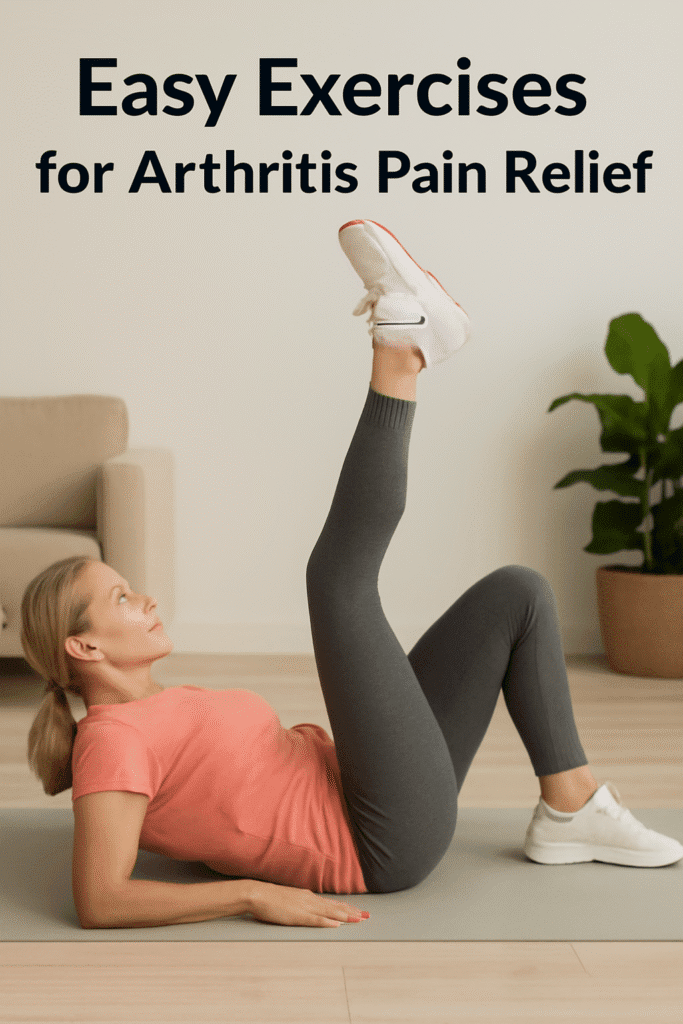
Why Exercise Helps Arthritis Pain
The idea of exercising might not sound intuitive when you are already in pain, and yet, they are the key to managing arthritis. The frequent motion aids you in three major ways:
Increases The Flexibility of the Joints: At its mild form, movement between joints is convenient by the activity as it allows joint lubrication.
- Boosts the Muscles: Your stronger muscles are offering a good support to your joints and therefore this strain is avoided.
- Decreases Stickiness: Regular stretching will decrease your stiffness as well as your range of motion.
- It is also possible to combat it by using simple exercises that will help alleviate inflammation and increase mobility, restoring some control over the pain.
Prepare yourself Before You Start
Warm up 510 before you start your arthritis-friendly exercise. Light warm-up helps your body get ready by raising the blood circulation and reducing the chances of injury.
Mild Warm-Up Alternatives
Shoulder Rolls: Ten times forward and ten times back to work out a tension and facilitate circulation.
Neck Tilts: with small movements tilt your head side to side and hold each position five seconds.
Ankle Rolls: Roll your ankles sideways to improve flexibility.
Stretching The most important thing in case you feel stiff when you get up in the morning or even when subjected to inactivity in a long time is warming up.
Easy activities to Relieve Arthritis Pain
These are some low-stress exercises that are also safe to arthritis sufferers. Major joints being taught include knees, hips, and hands.
1.Chair Yoga
An outstanding yoga option in case of arthritis is sitting-supported yoga. It enhances flexibility and loosens stiffness as well as easing pain.
How To Do It:
Put oneself in a firm chair with the feet on the floor.
As you breathe in, you are supposed to stretch your arms upwards and maintain a straight back.
Gradually put your arms down and rotate your torso to one of the sides. Two counts of five; repeat on other side.
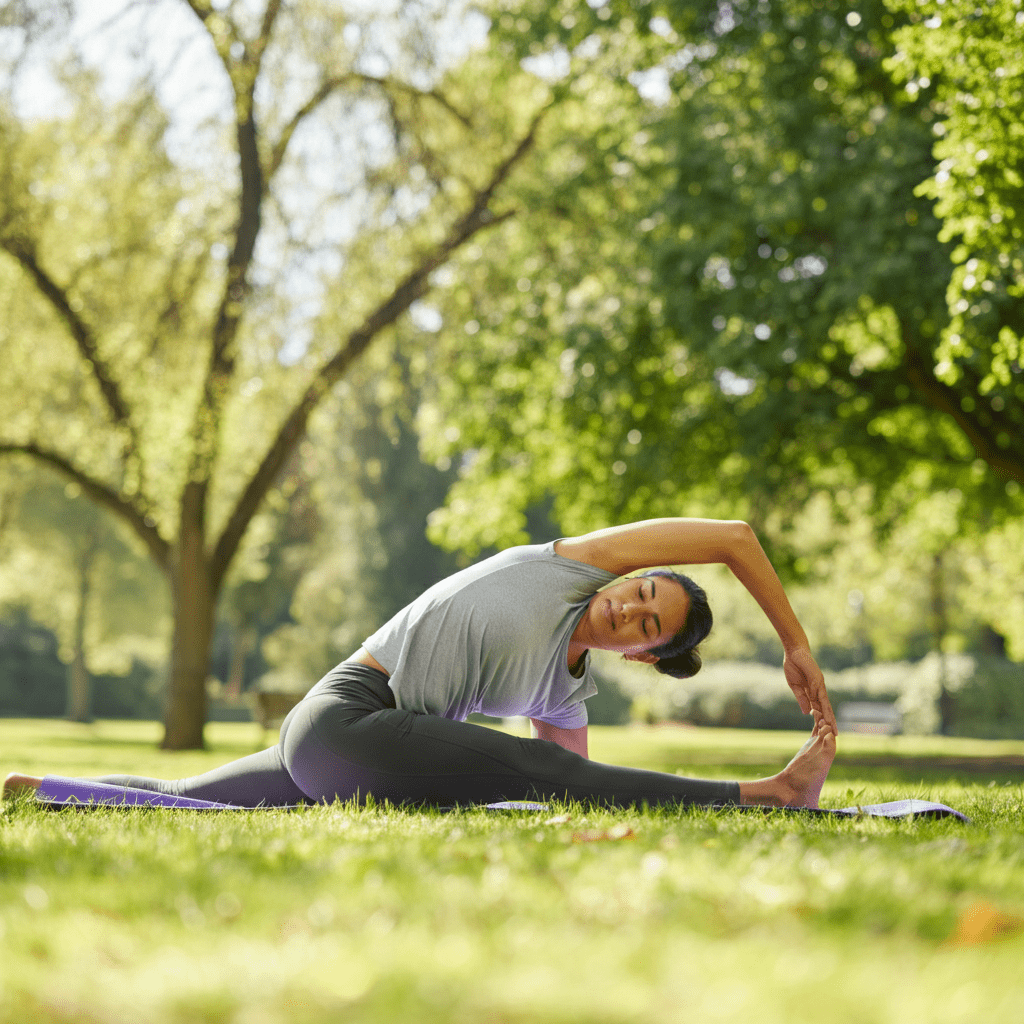
2. Hand Stretches
People who have developed arthritis in their fingers can avoid pains through regular use of hands.
How To Do It:
After extension of fingers, make a fist with gentleness all the same.
Oppose your hand as widely as possible and then repeat this again after ten times.
Your other alternative is finger walking. You touch the tip of your thumb to the tip of each finger in turn and then back.
3. Water Aerobics
Water movements reduce the pressure on your joints and offer a non-harmful way of gaining strength.
How To Do It:
Walk or stretch in deep water i.e., up to 15-20 minutes in waist-deep water.
Become a part of the pool and touch the edge to support oneself and conduct leg raises or arm rotations.
4. Knee Strengtheners
The pain at the joint may be relieved, and the further degradation of the joint may be avoided with the help of strong muscles surrounding the knee.
How To Do It:
Find yourself a chair. Sit, one of the feet on the floor and straighten the leg.
The stretching should last two seconds and be followed by lowering. Per leg 10 Reps 15 times.
5. Hip Bridges
This practice makes your hips and lower back very strong which minimizes discomfort caused by arthritis.
How To Do It:
Lay down on your back and bend your knees so your feet are at the distance of hips.
Pull the heels to the floor and lift your hips to ceiling without straining.
Slow lower and repeat 10 times.
Consistency
Although these exercises are basic, it does not count when one does them regularly. Uphold a timeline, and have in mind 2030 minutes of working out at least thrice a week. Increase and decrease to a level that is comfortable because working to hard may worsen your symptoms.
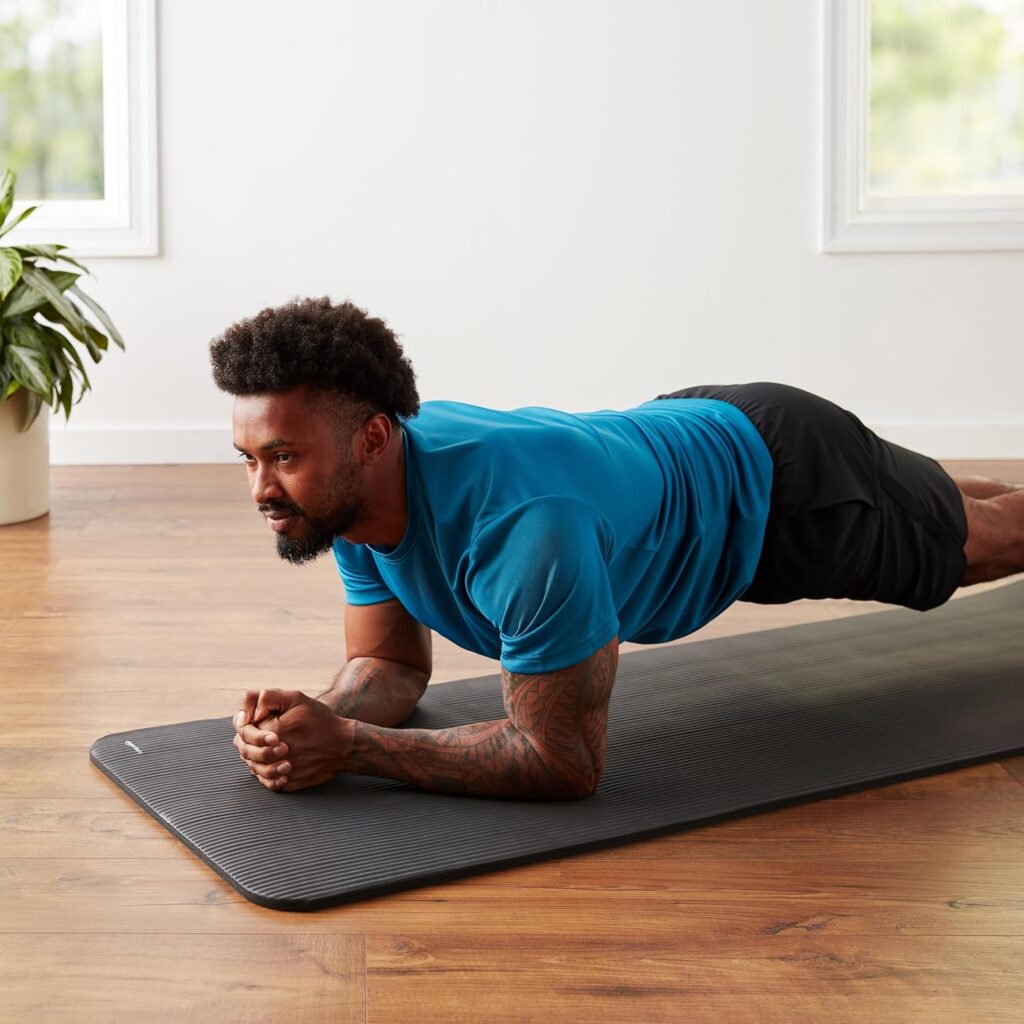
What to do before getting professional assistance
Even though such exercises may come in handy, you should take account of your body. In case you feel continuous pain, discomfort, or there are no signs that your symptoms are getting better, you can visit a healthcare expert. Personalized advice can be given by a physical therapist or a well-qualified trainer who will also make sure that the exercise program you apply is adjusted to your particular needs and constraints. They also may assist you develop ways to adjust movements to deter injury and gain maximum advantage in the long run.
Tips: Maintain a journal and document your activities and write about any improvements you experience such as less stiff or greater mobility.
People Also Ask
1. Can exercise aggravate arthritis?
No, exercise relieves and does not exacerbate arthritis symptoms when it is performed the correct way. Begin but at a low intensity with light-impact work and be careful not to overdo it.
2. Which exercises are good to use when having arthritis?
Low-impact exercises, included yoga, swimming, walking and stretching, are the best exercises since they do not strain the joints.
3. What is the frequency of exercises with arthritis?
Practise 2030 minutes a minimum of thrice per week. Popular treatment of arthritis is better than vigor.
4. Do arthritis of the hands exercise exist?
Yes! Stretching exercises of the fingers e.g. grabbing, stress balls and rotations on the hands are great exercises to minimize the stiffness and pain in hands.
5. At what time of the day is it suitable to exercise on arthritis?
Exercising should be done either after mid-morning, or the late afternoon when the stiffness is usually gone and your joints are now warmed up.
Healthy Suggestions on Long-Term Management of Arthritis
In addition to physical activity, there are some more measures to control arthritis:
Rest: active and inflamed joints need time to heal so take frequent breaks in between.
Healthy Weight: Being overweight adds additional burden on your joints.
Wear Good Equipment: Wear good shoes and where necessary provide supports in form of braces or worn cuffs.
Activities Friendly to the Joints: Replace the active activities with the less stressful ones, such as gardening or swimming.
Conclusion
Those with arthritis do not have to be in the grips of their condition. With some of these simple ways of relieving arthritis pains, you can easily increase your mobility and quality of life as well as decrease pain. Begin by making small steps, be consistent and reward yourself with every milestone. These tips, when added to regular exercises will help develop a comprehensive strategy of managing arthritis and improving your daily quality of life.
Don t forget that it is also essential to listen to your body and alter your ritual in case of necessity. In case one feels discomfort or strain during some exercises, one should better consult with a medical care professional or physical therapist and fit a specific approach to their personal needs. Stress can also be managed by including relaxation practice like yoga, meditation which can also possibly reduce inflammation related to arthritis. It should be noted that you need not be too shy to ask people in arthritis communities or even fitness groups to keep you going. You are not the person who is going through this in isolation and every little thing means a lot to take you towards a better general state. Never stay the same! Future you will be grateful!
M. Saim Akhtar
Certified Health Content Specialist at HealthBoostMax. INFS-qualified nutrition researcher with 5+ years of evidence-based health writing. Focus areas: health wellness Information, preventive medicine, nutritional biochemistry, and fitness science.
-

 Healthy Lifestyle & Nutrition3 months ago
Healthy Lifestyle & Nutrition3 months agoBest Foods to Boost Testosterone Naturally in 2025
-

 Healthy Lifestyle & Nutrition2 months ago
Healthy Lifestyle & Nutrition2 months agoHow to Boost Your Immune System Naturally (2025)
-

 Healthy Lifestyle & Nutrition3 months ago
Healthy Lifestyle & Nutrition3 months agoTop Superfoods for Energy in 2025 – Boost Your Vitality
-

 Disease Prevention & Health Tips3 months ago
Disease Prevention & Health Tips3 months agoCOVID Vaccine Heart Risk Warnings and Safety Update in 20025
-

 Fitness & Exercise3 months ago
Fitness & Exercise3 months agoSimple Exercises to Boost Flexibility with Arthritis
-

 Fitness & Exercise2 months ago
Fitness & Exercise2 months agoHealthy Meal Plans for Men | 3,000-Calorie Muscle-Building Ultimate Guide
-

 Men’s & Women’s Health2 months ago
Men’s & Women’s Health2 months agoHow to Balance Hormones Naturally for Women | Ultimate Hormone Balance Guide (2025)
-

 Mental Health & Wellness3 months ago
Mental Health & Wellness3 months agoQuick Stress Relief Techniques for Instant Calm(2025)
-

 Healthy Lifestyle & Nutrition2 months ago
Healthy Lifestyle & Nutrition2 months agoHow to Detox Your Body Safely at Home in 2025
-

 Fitness & Exercise2 months ago
Fitness & Exercise2 months agoBest Time to Drink Green Tea for Weight Loss


